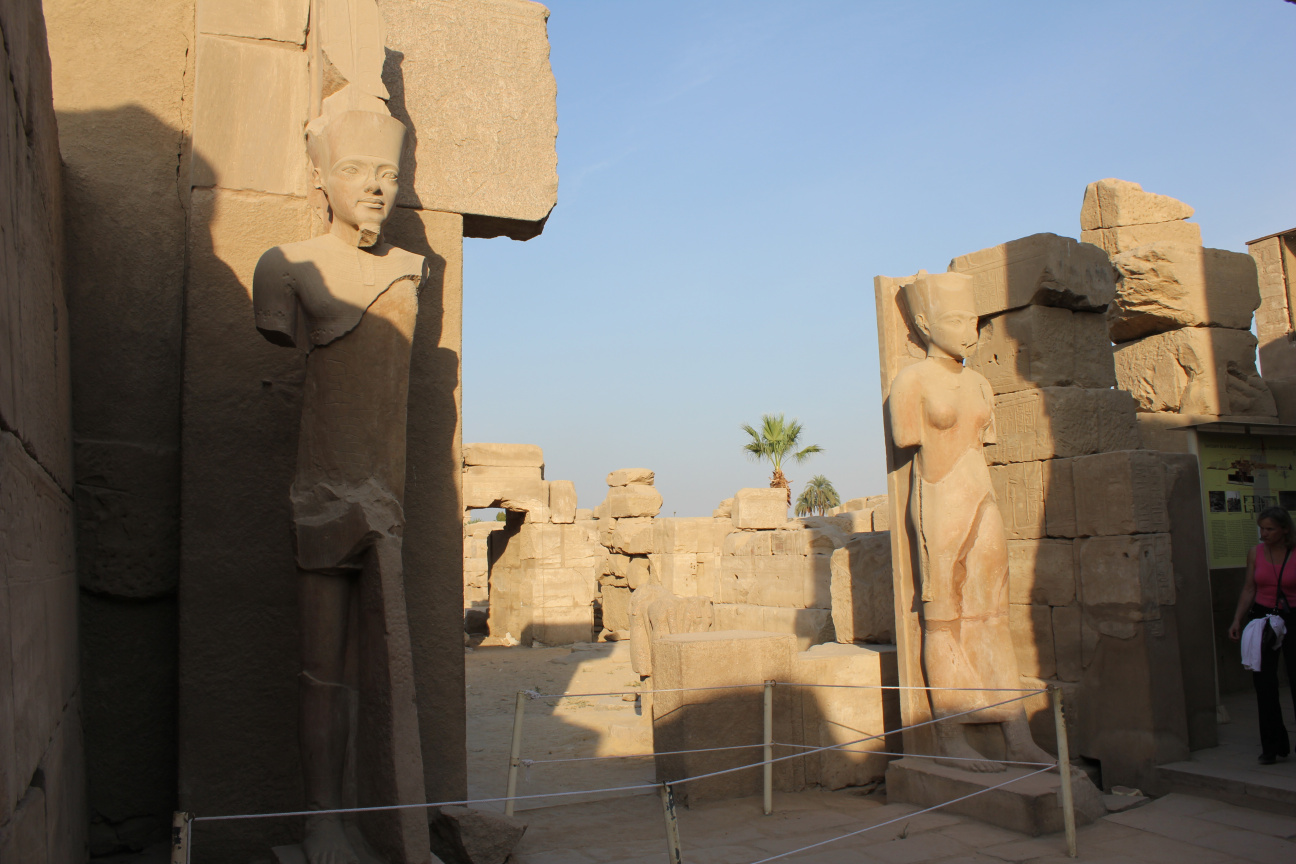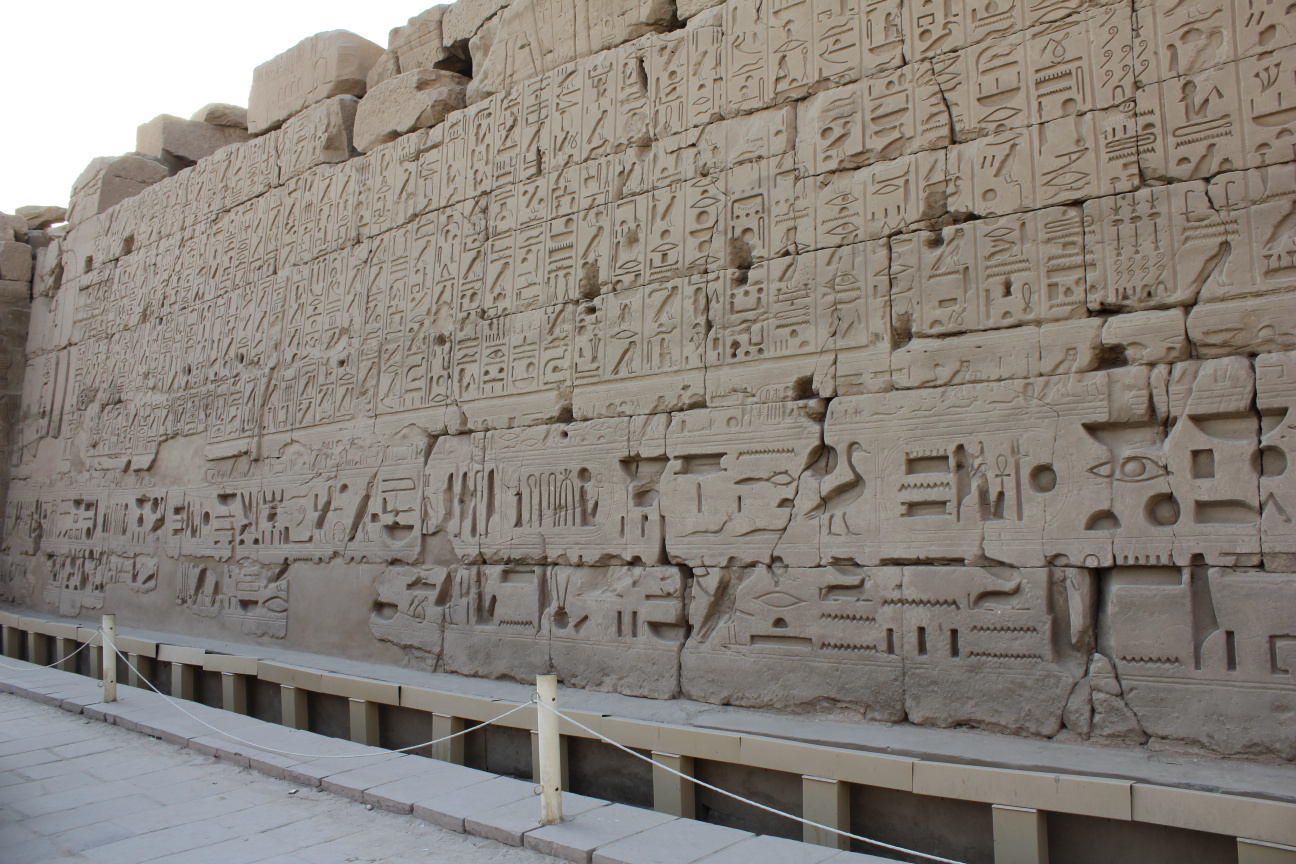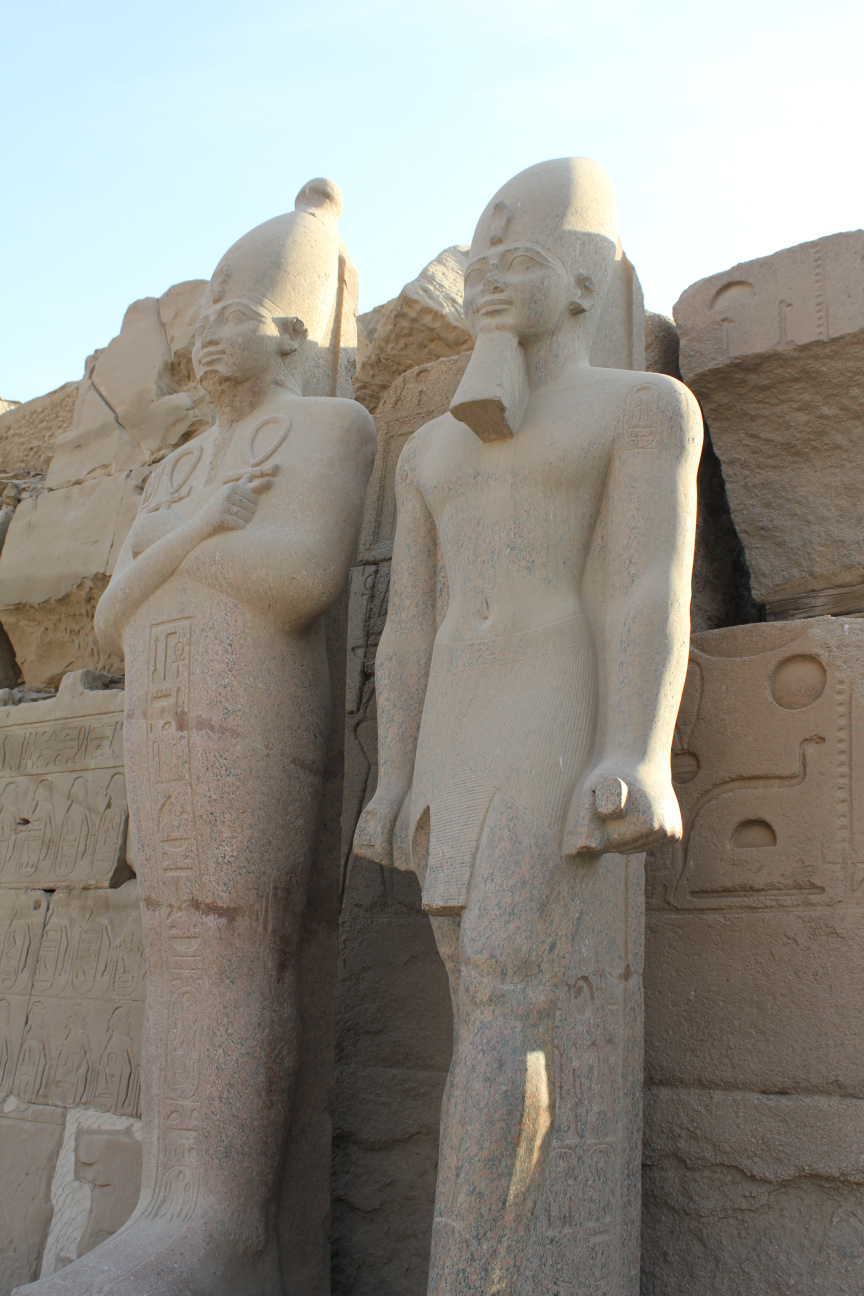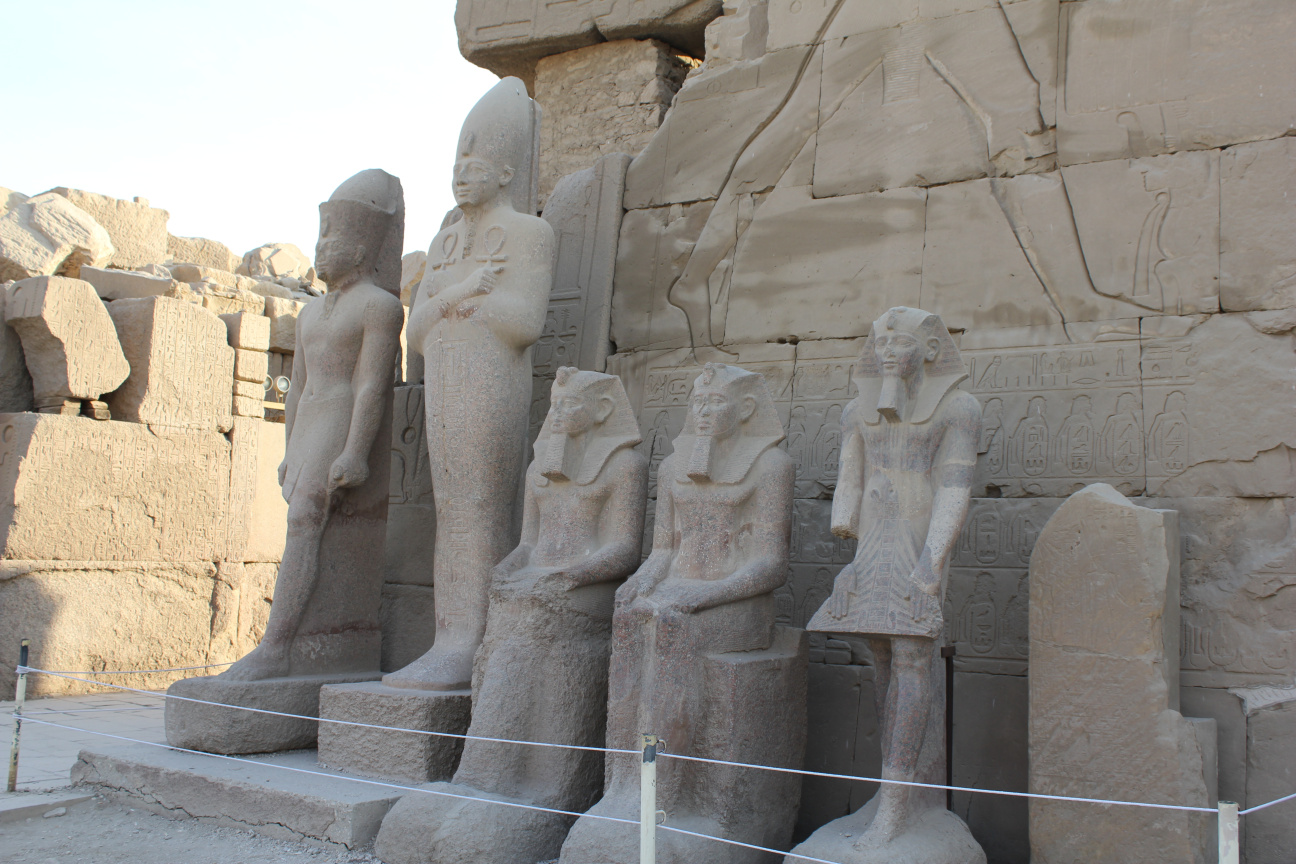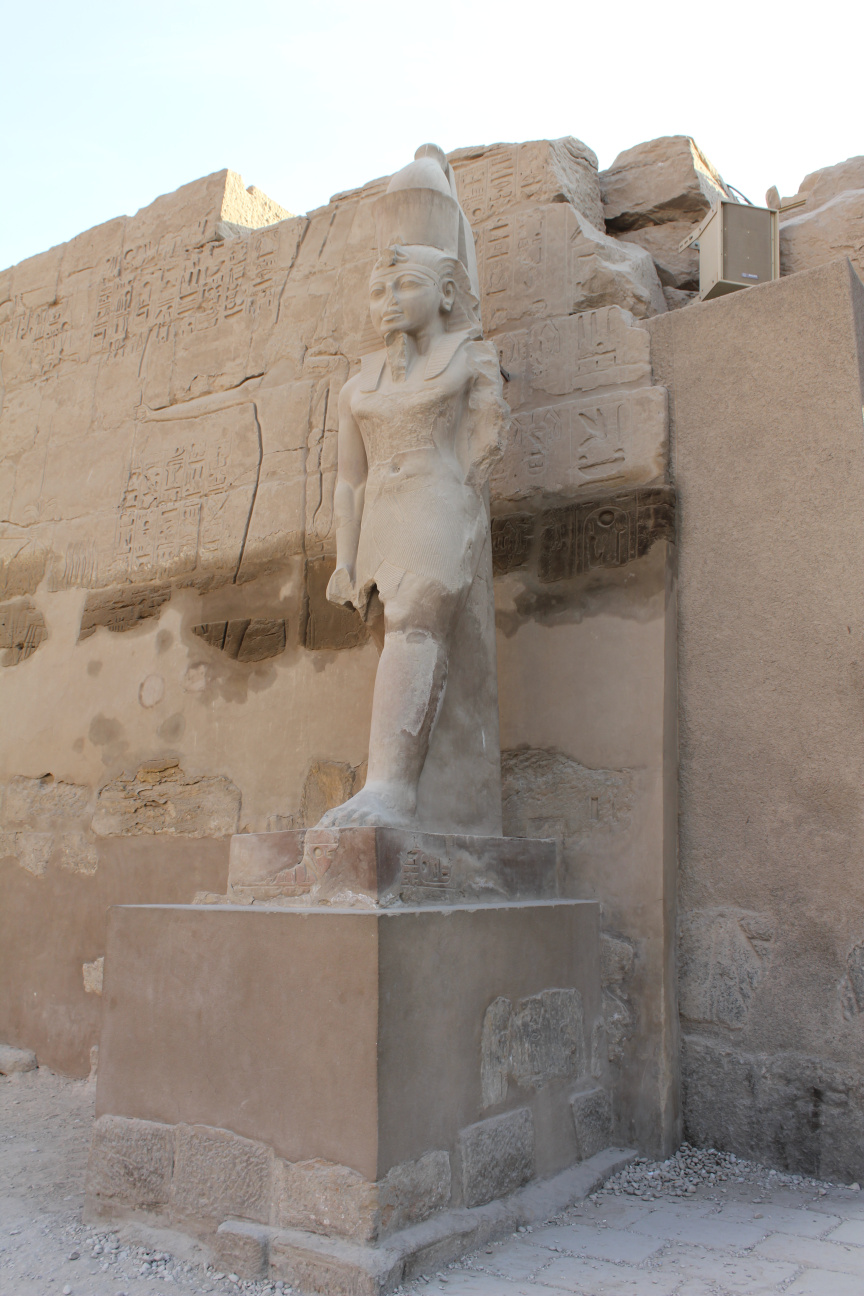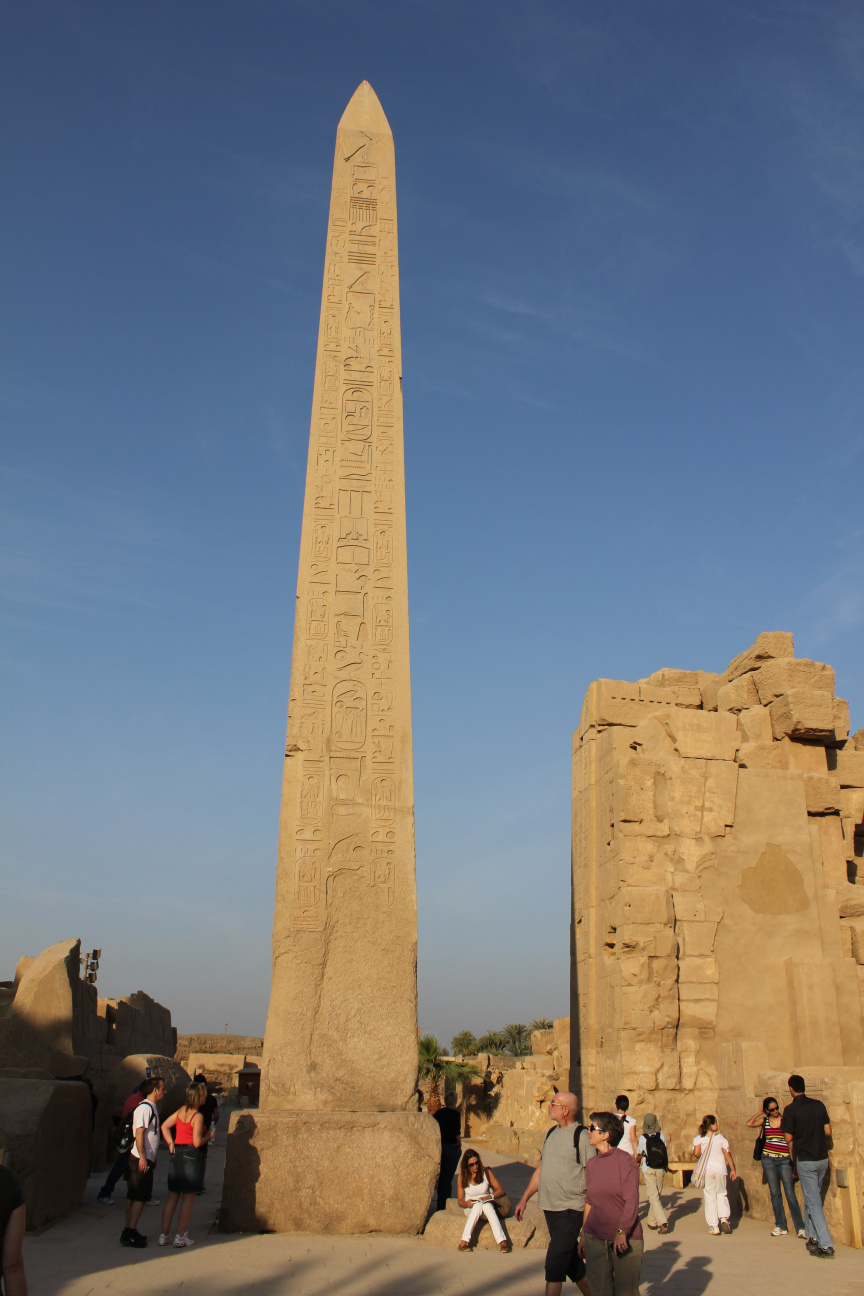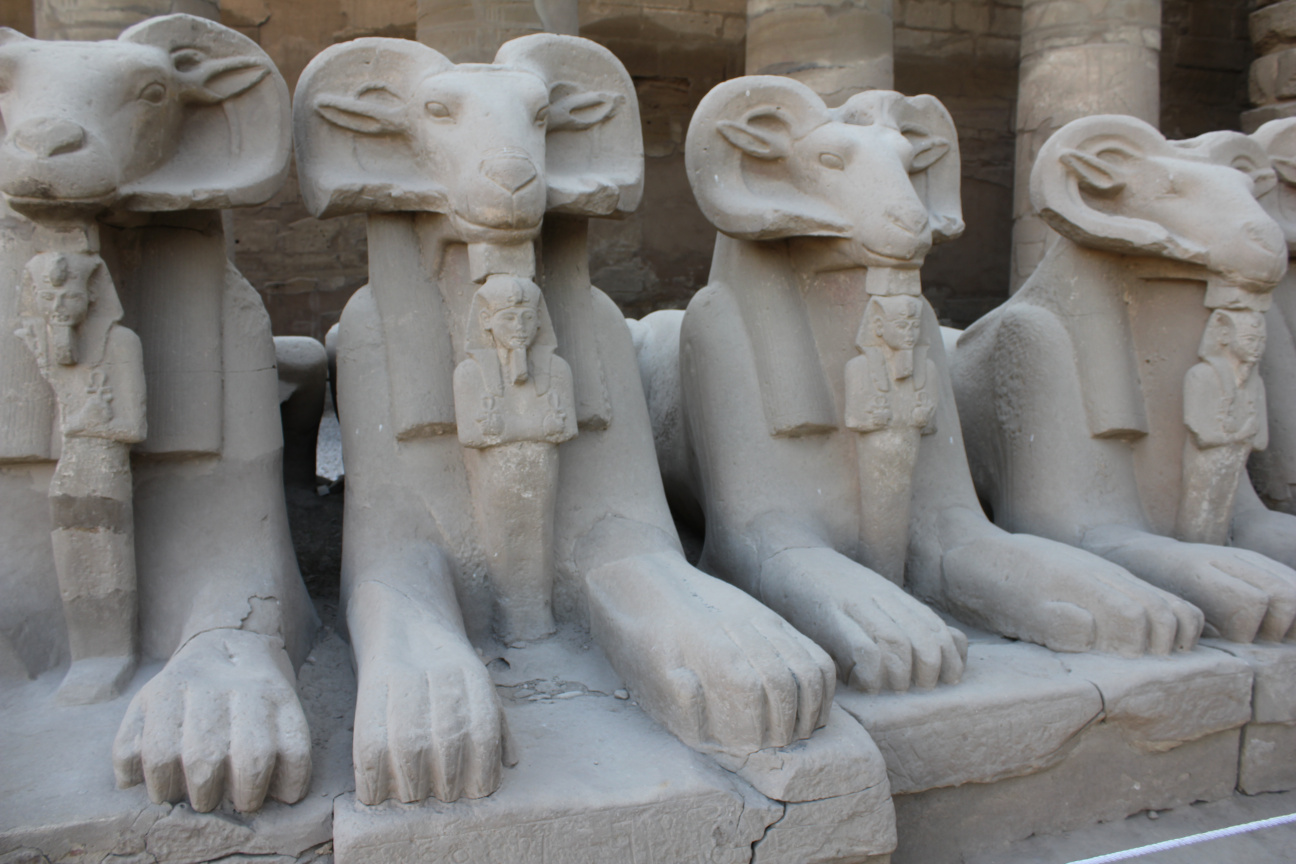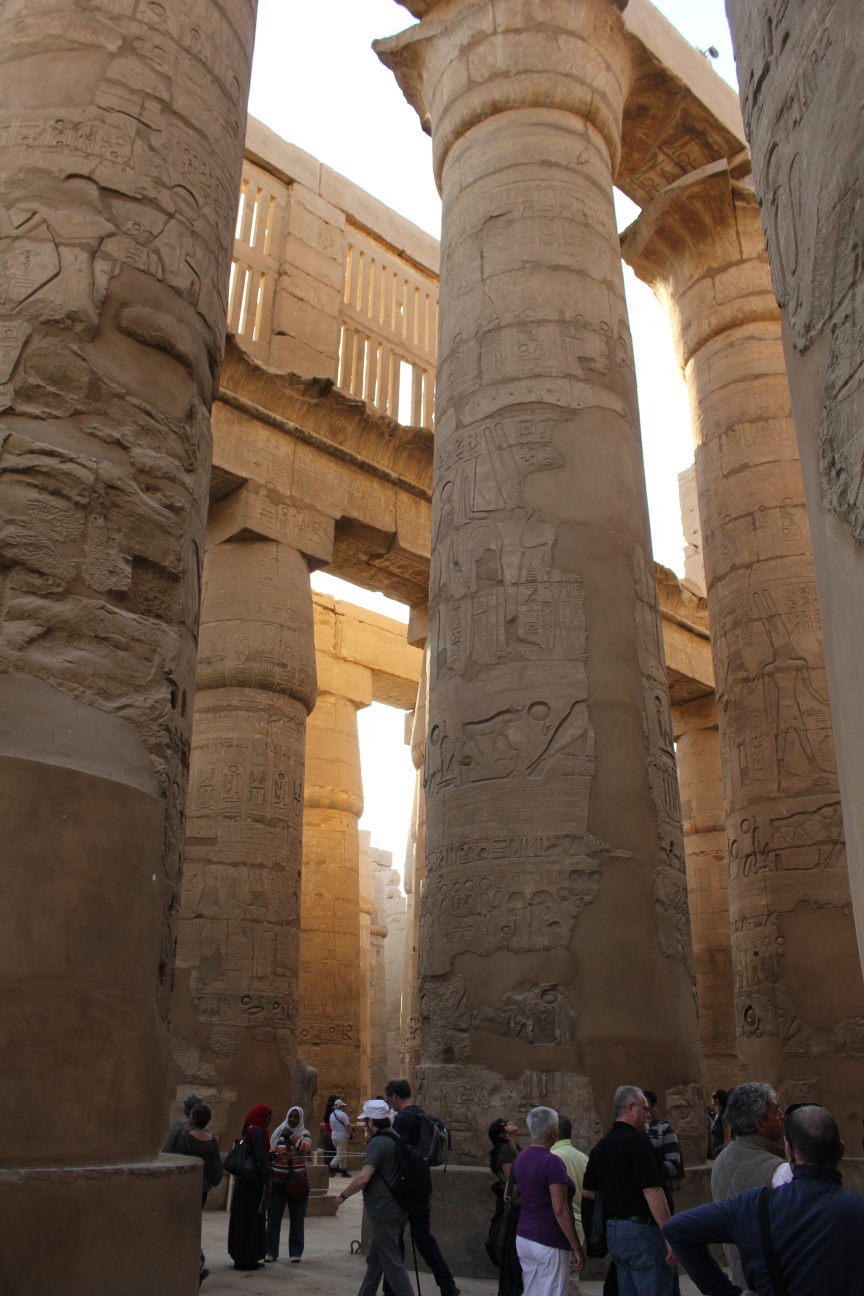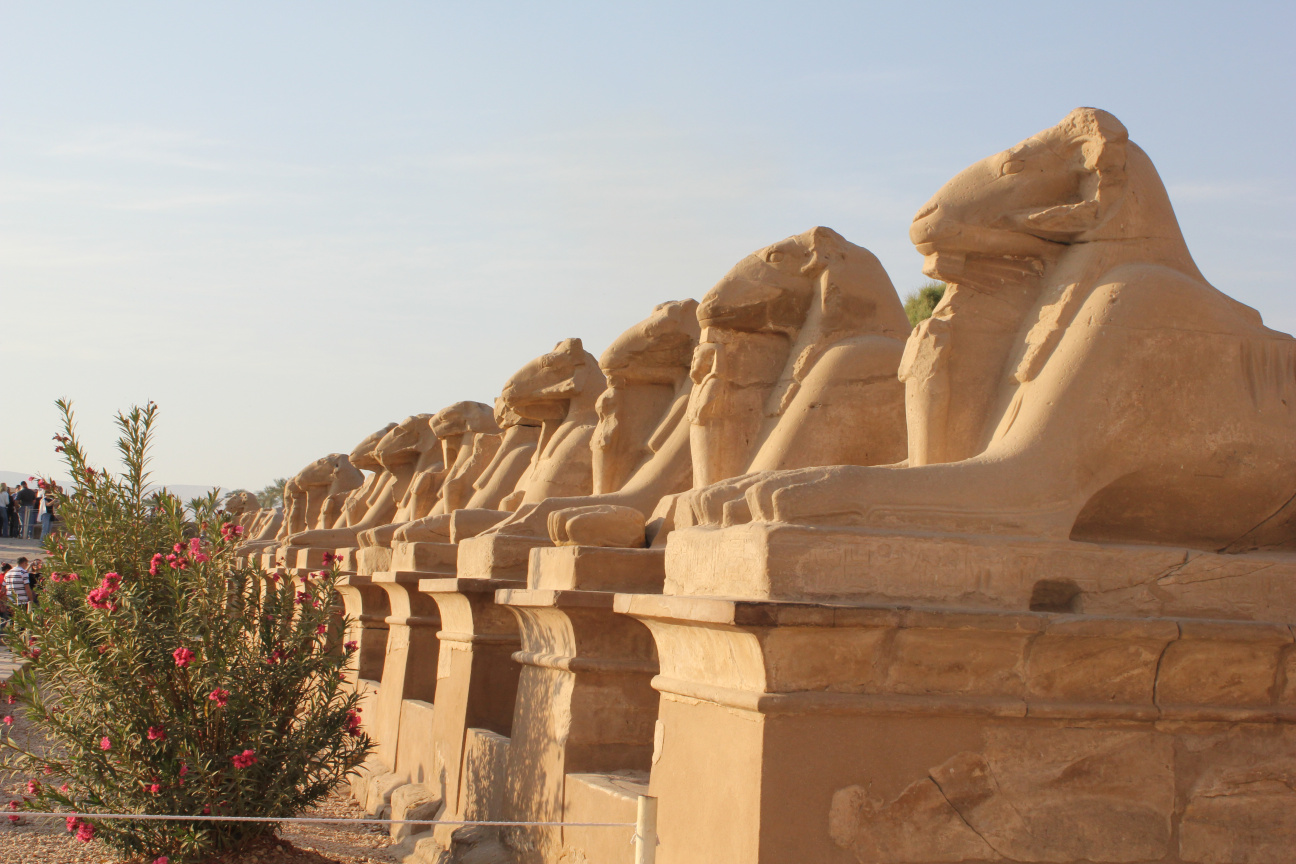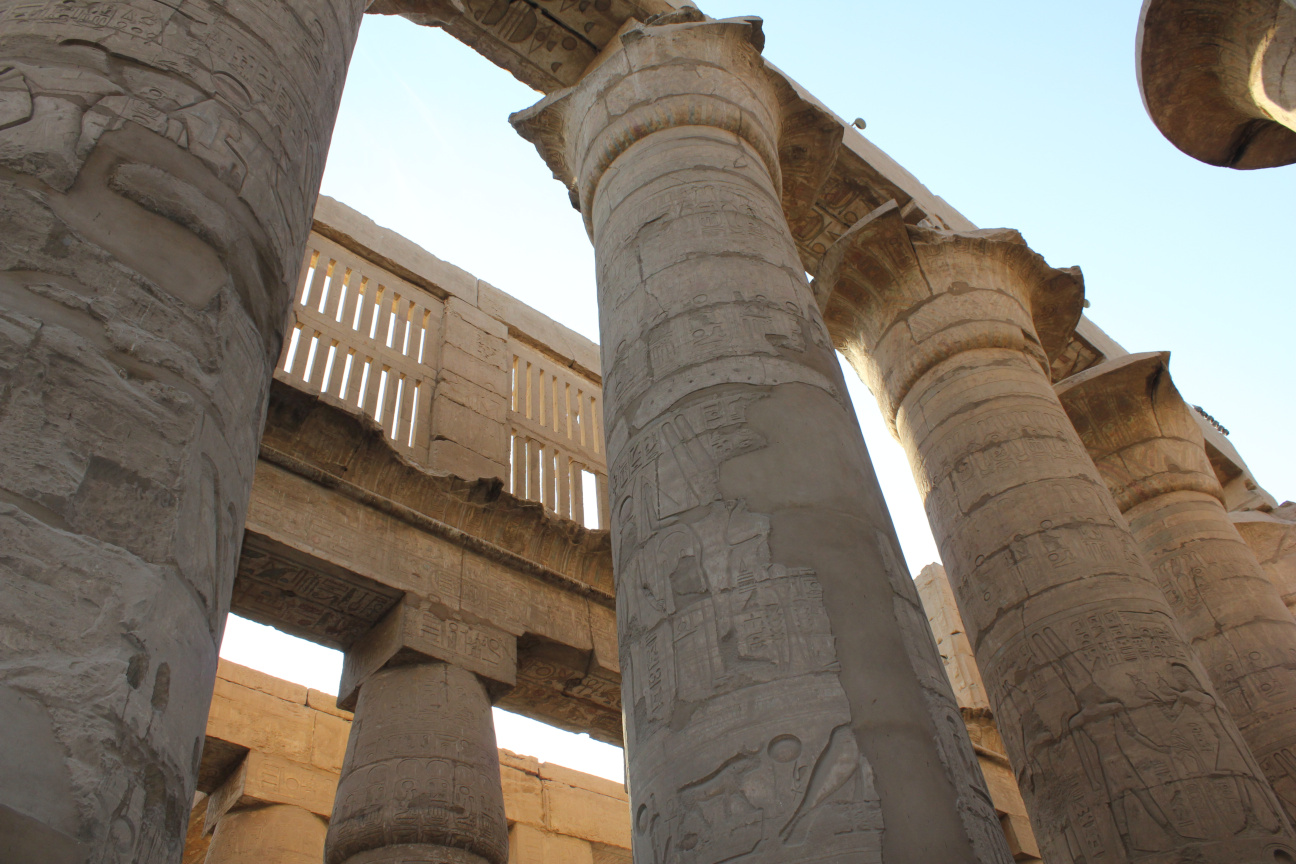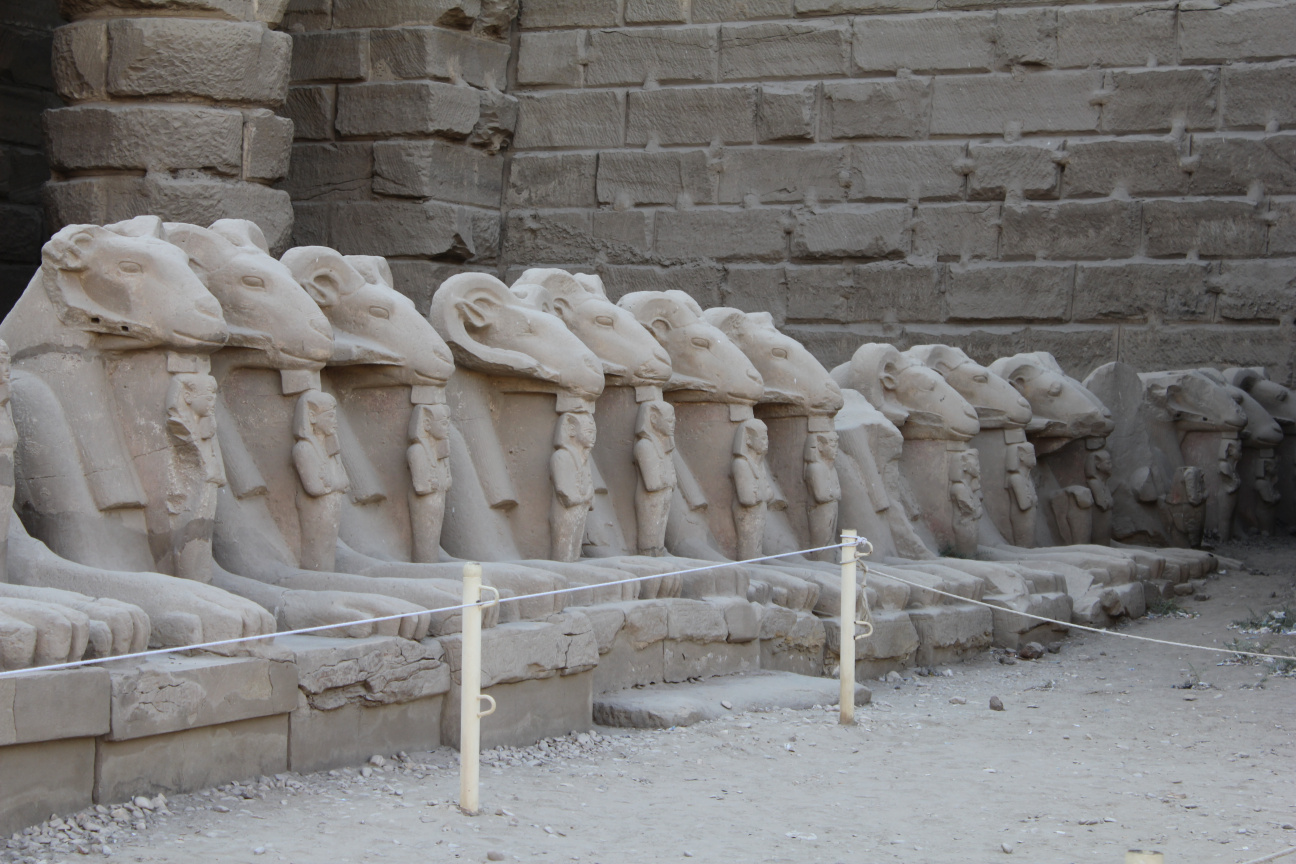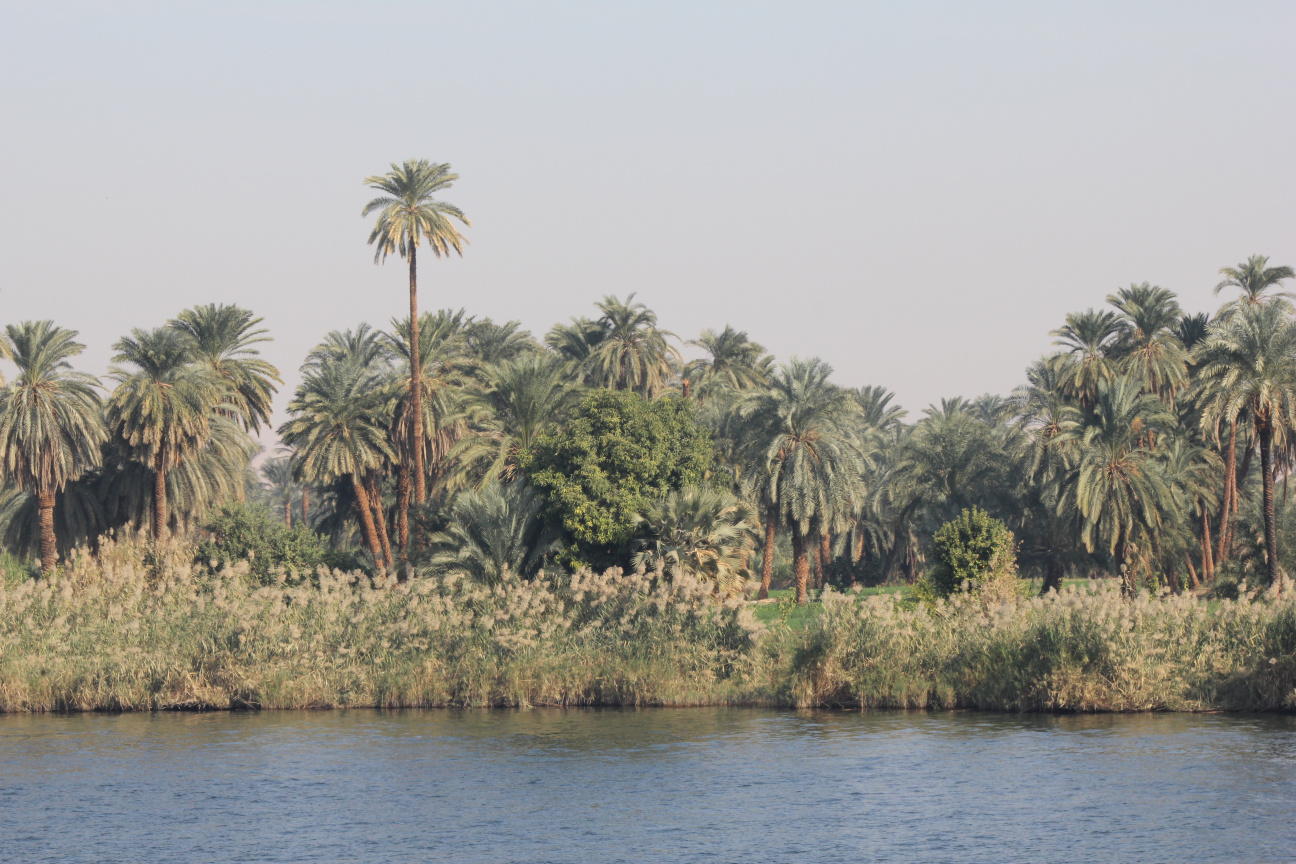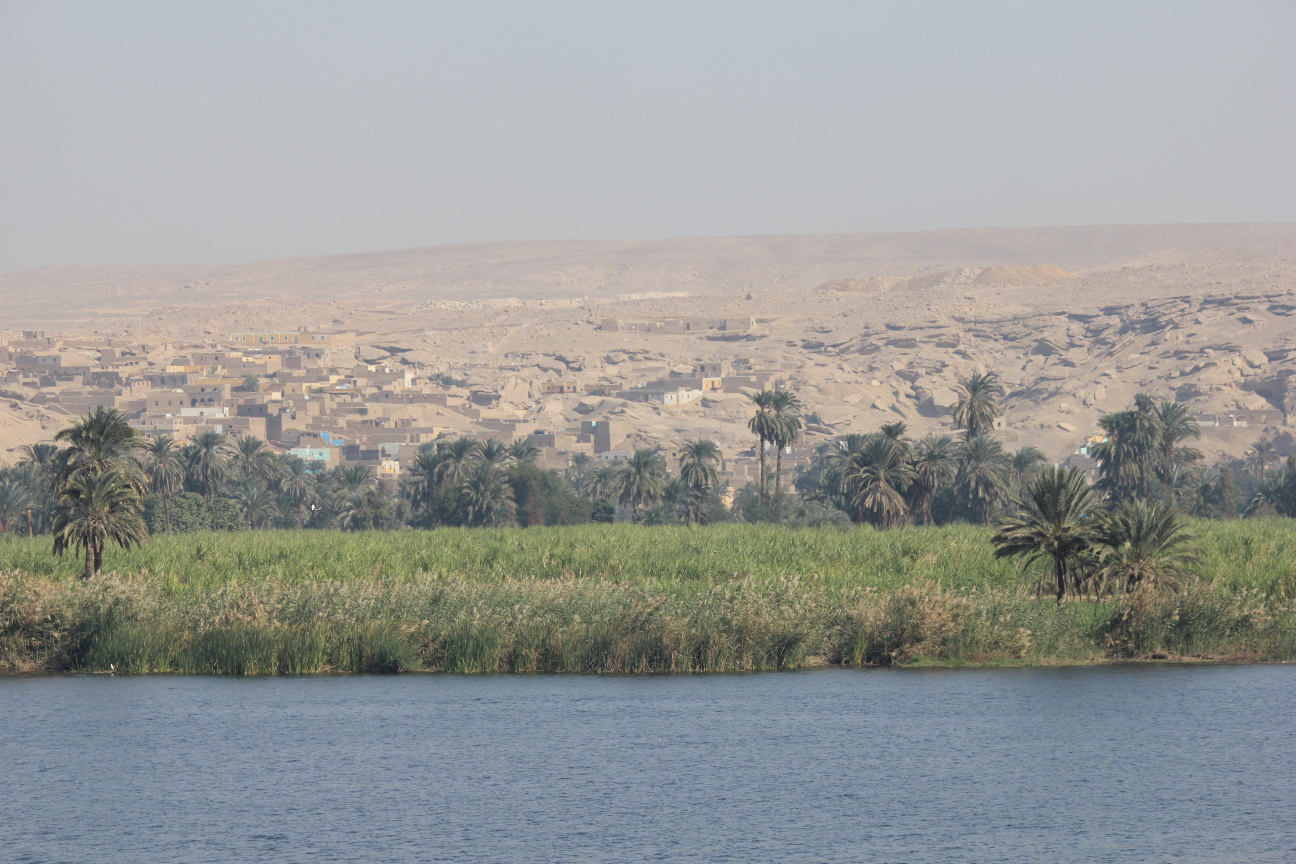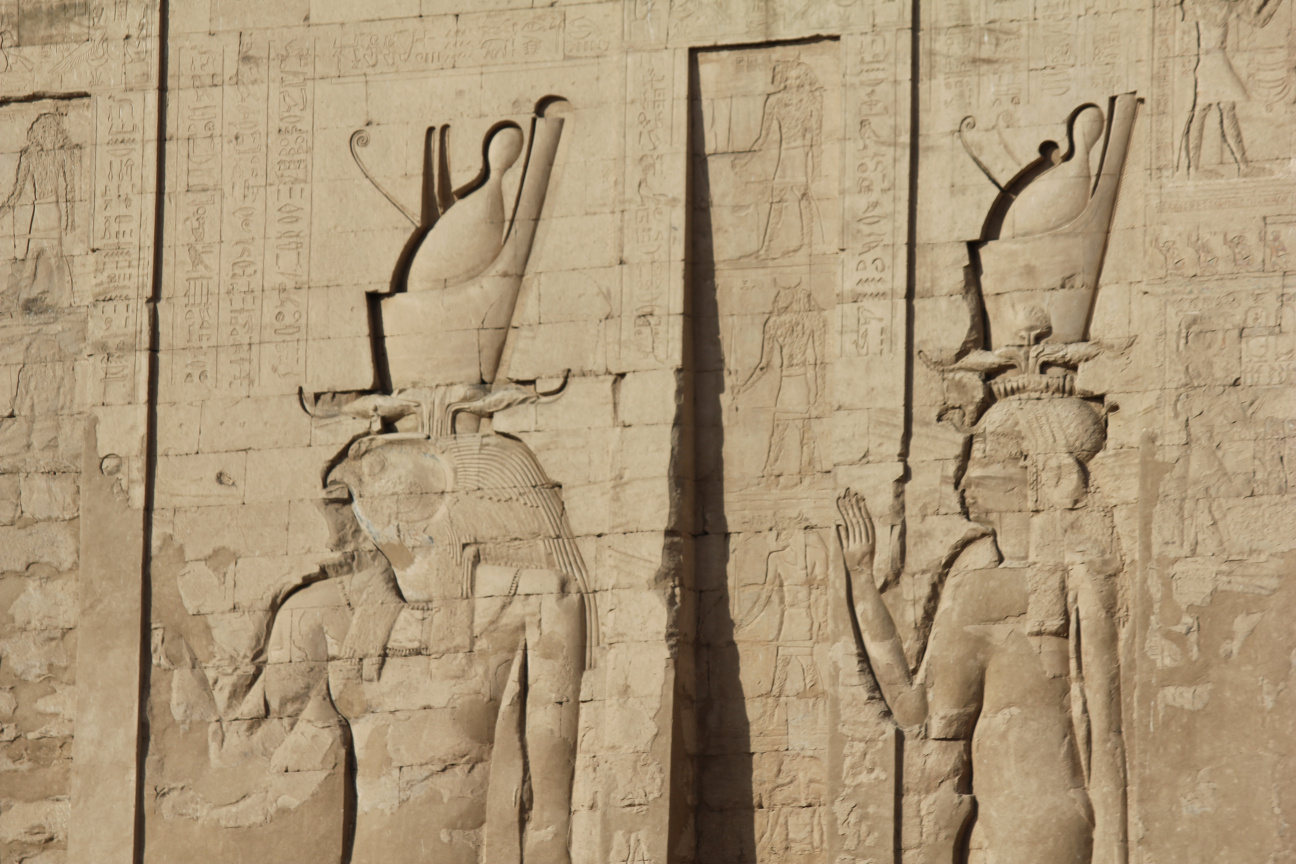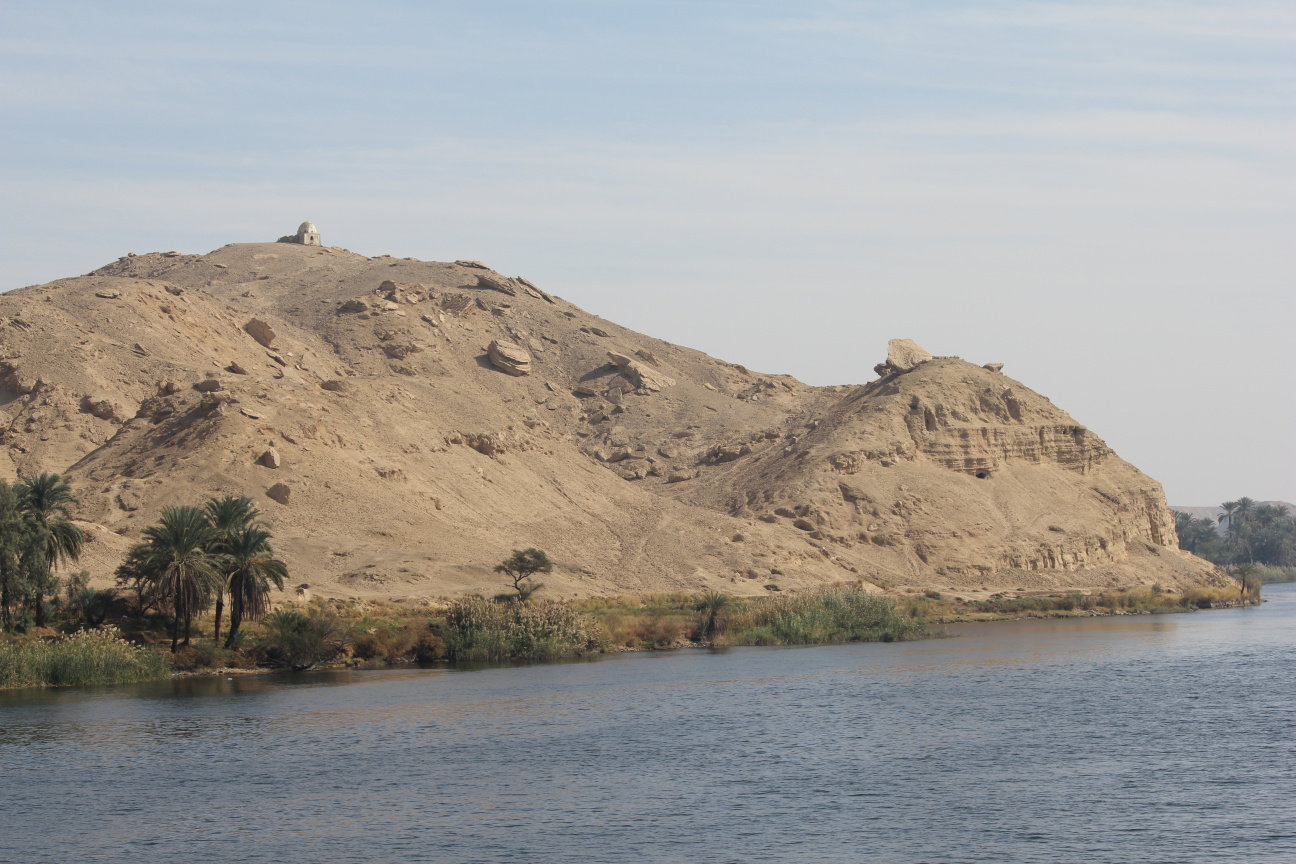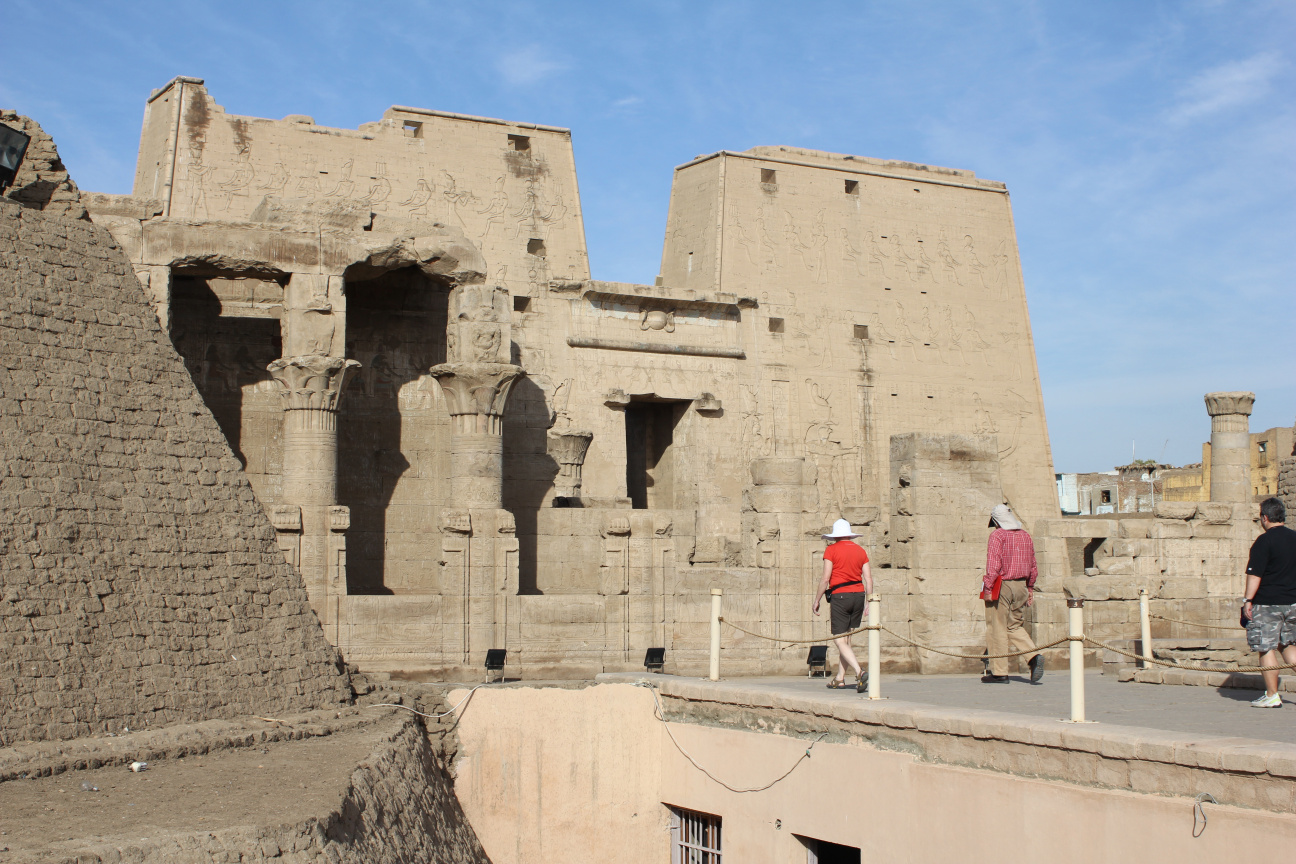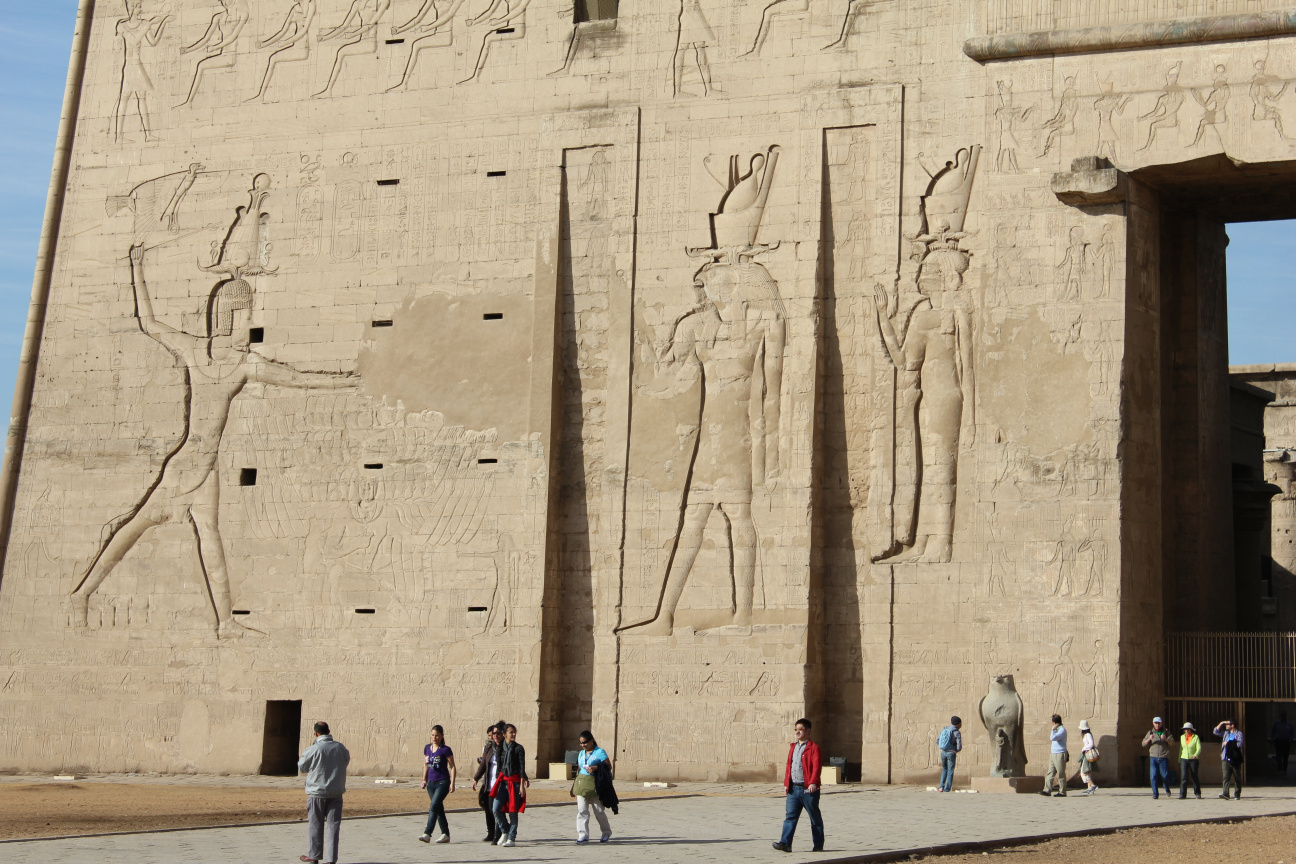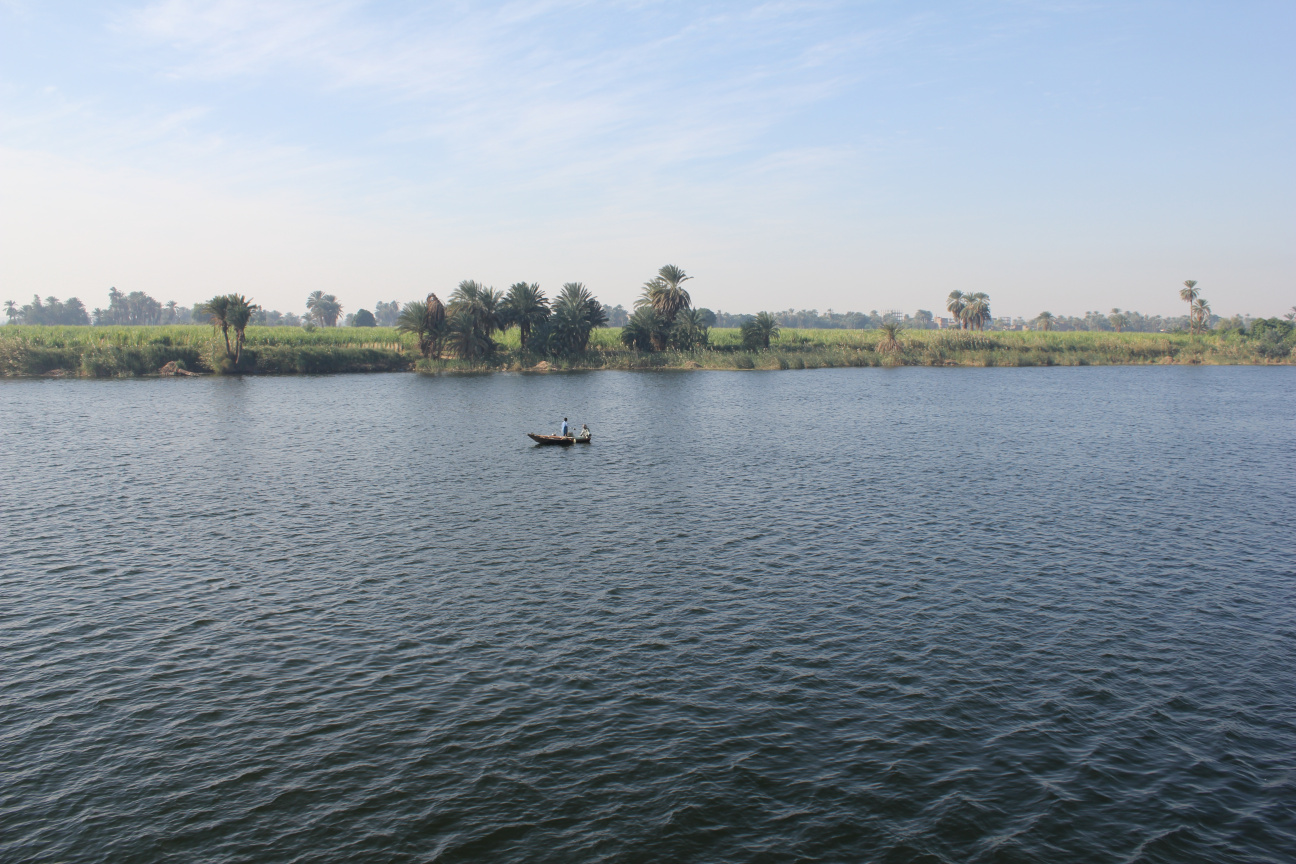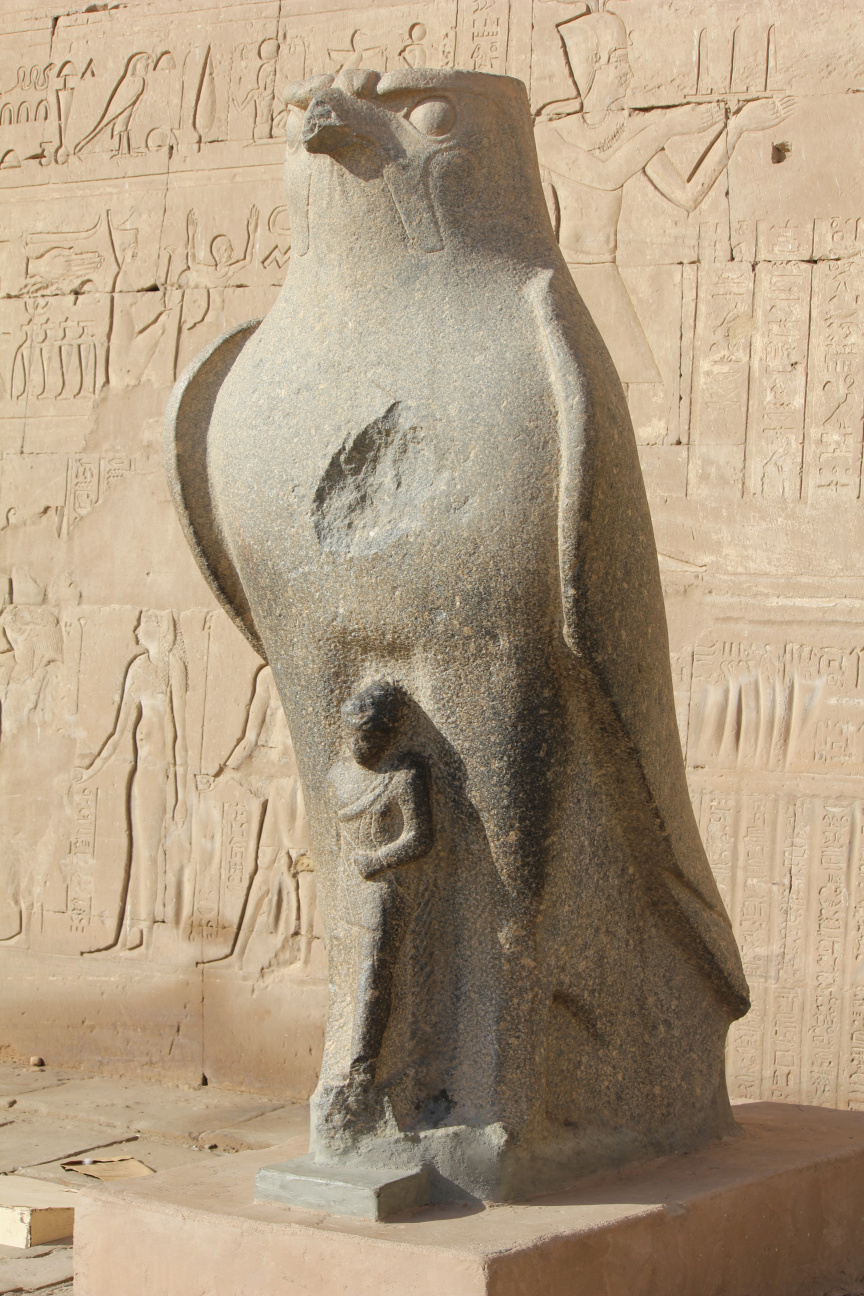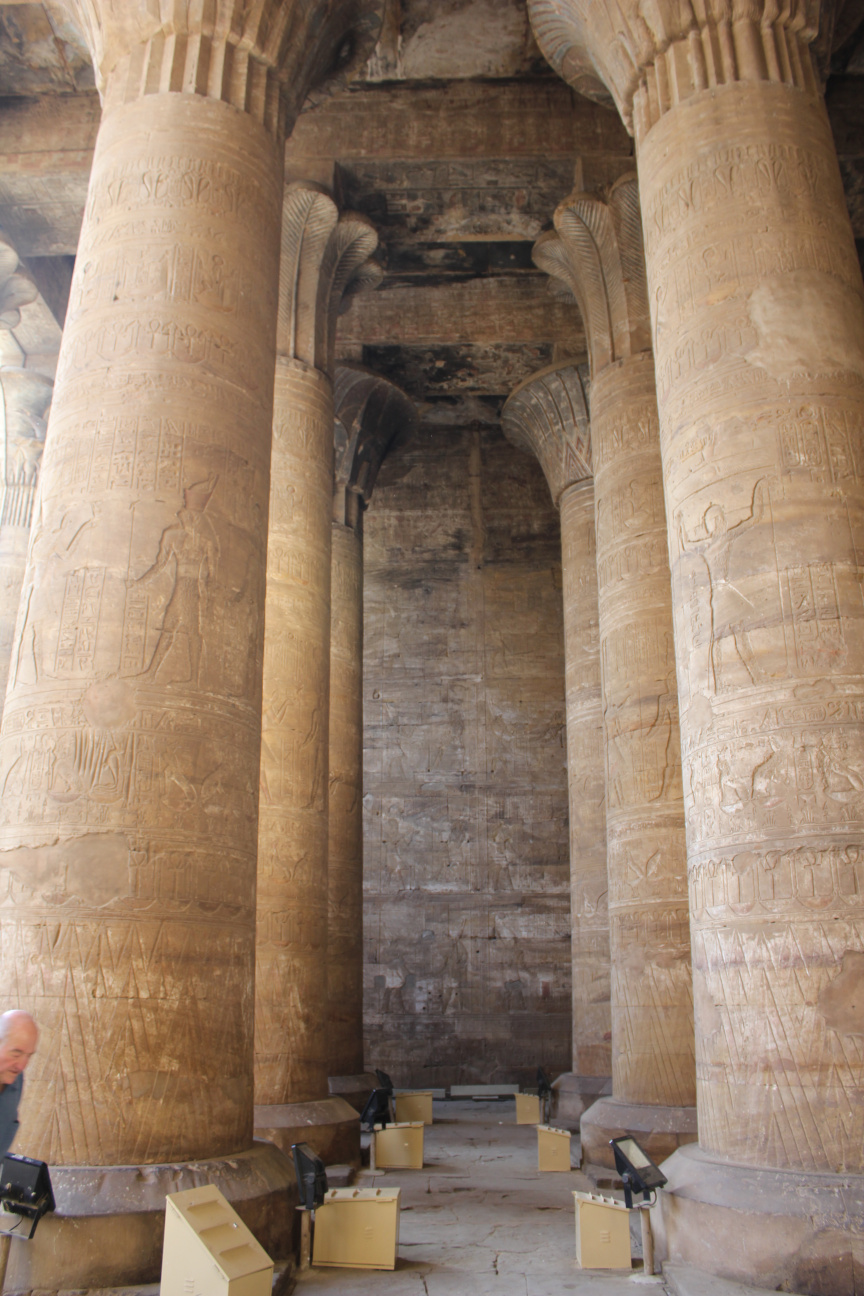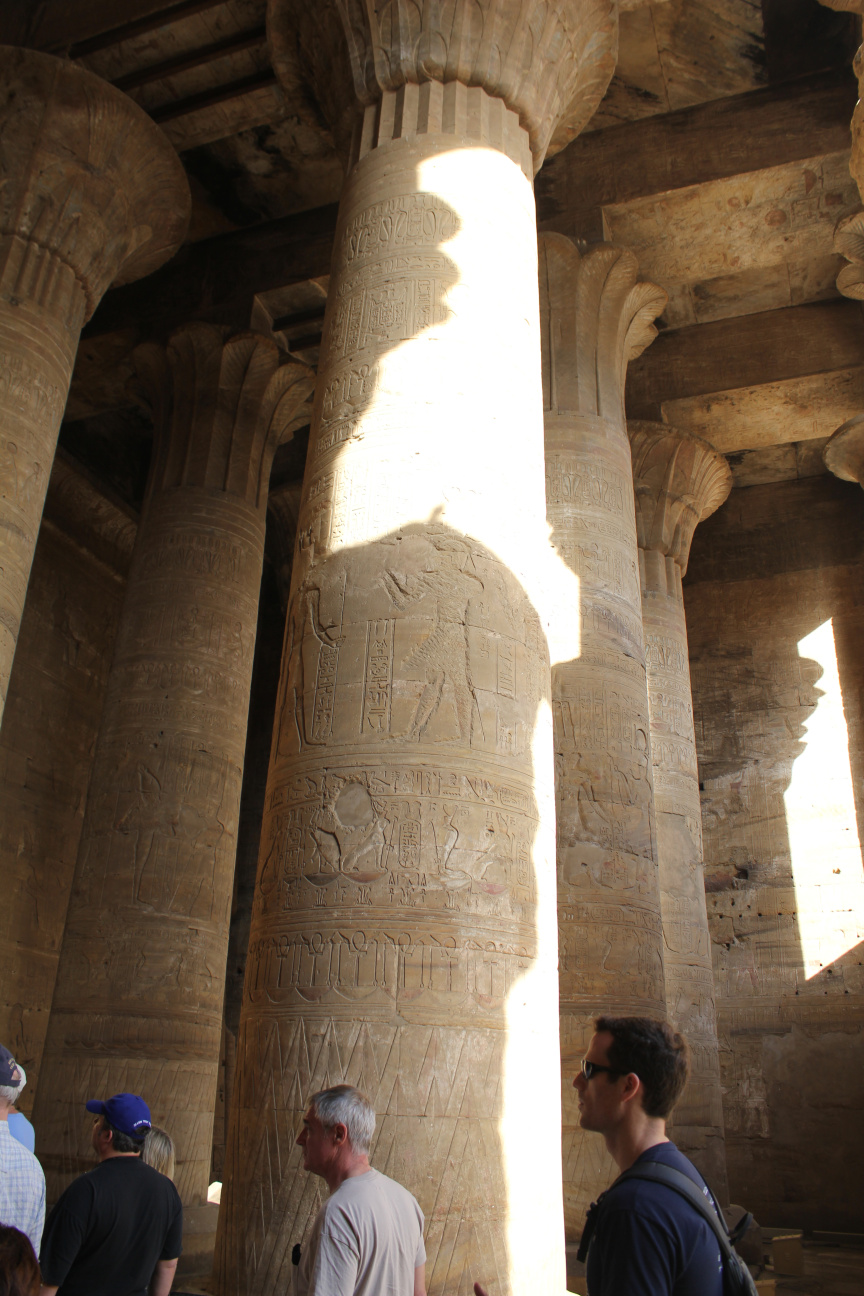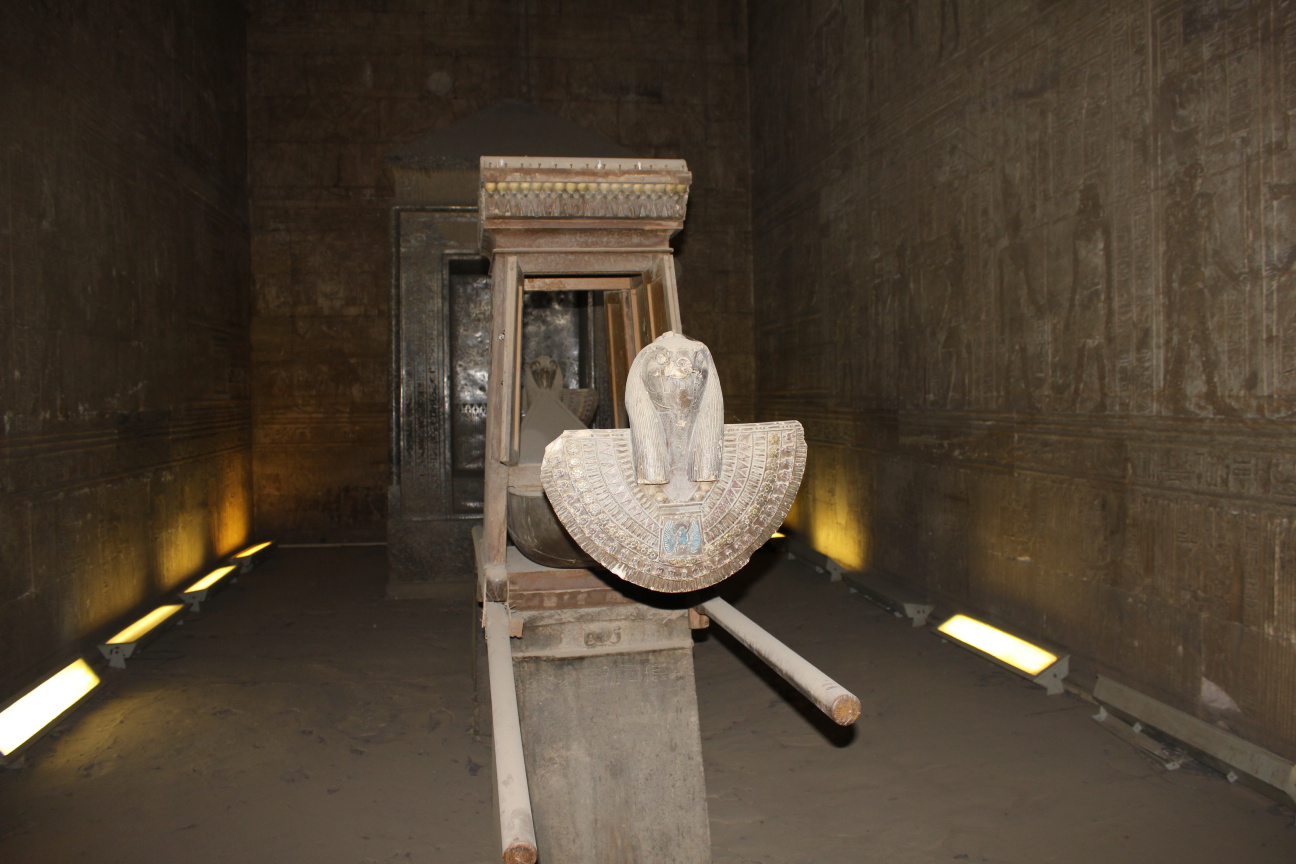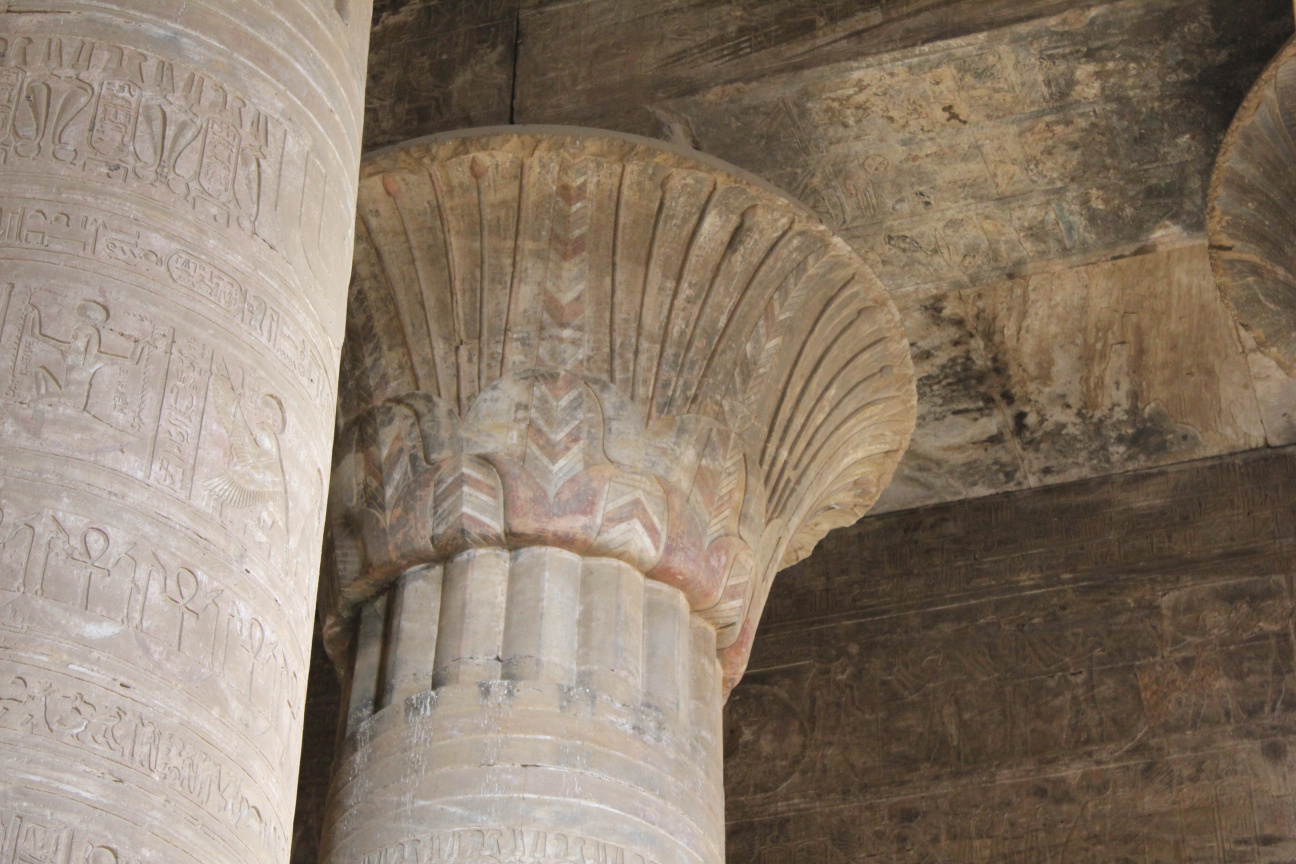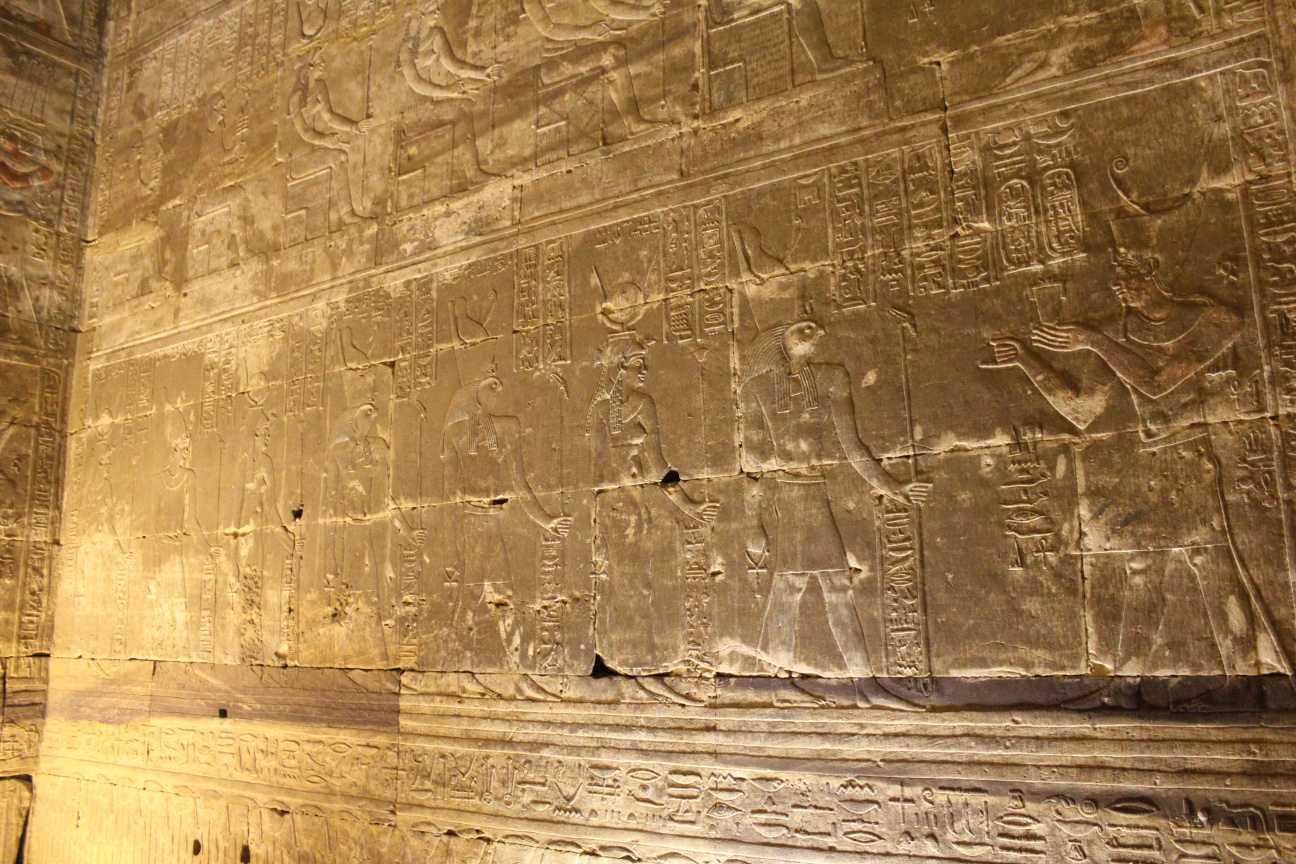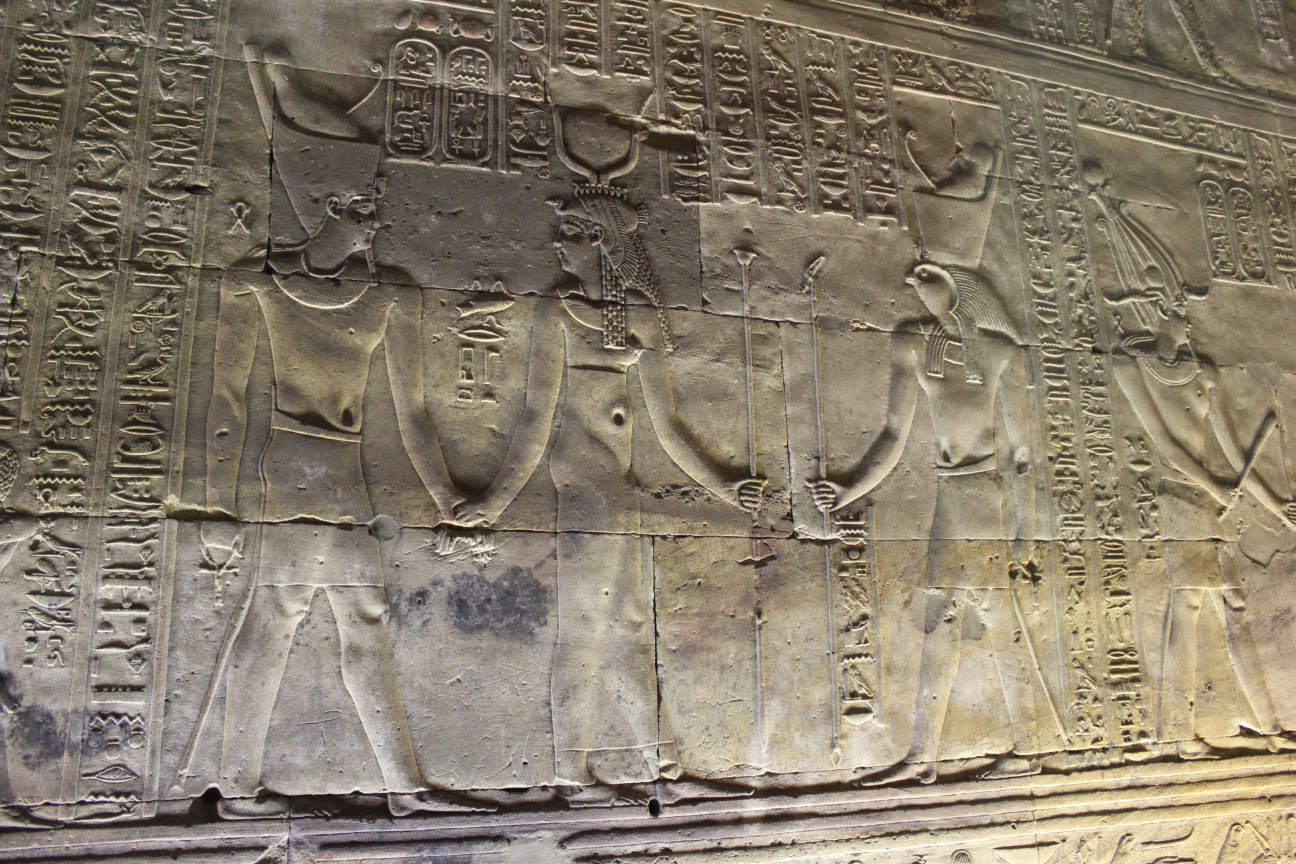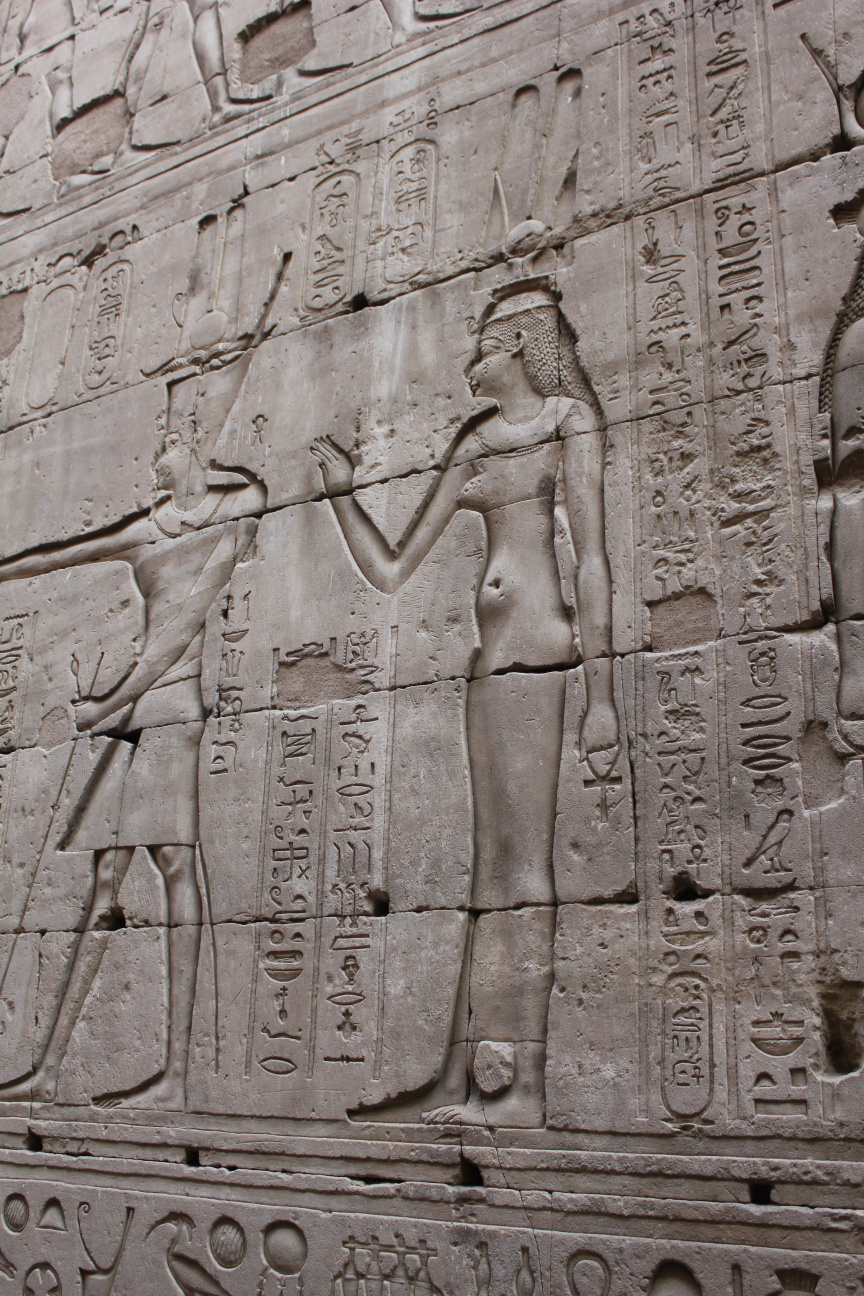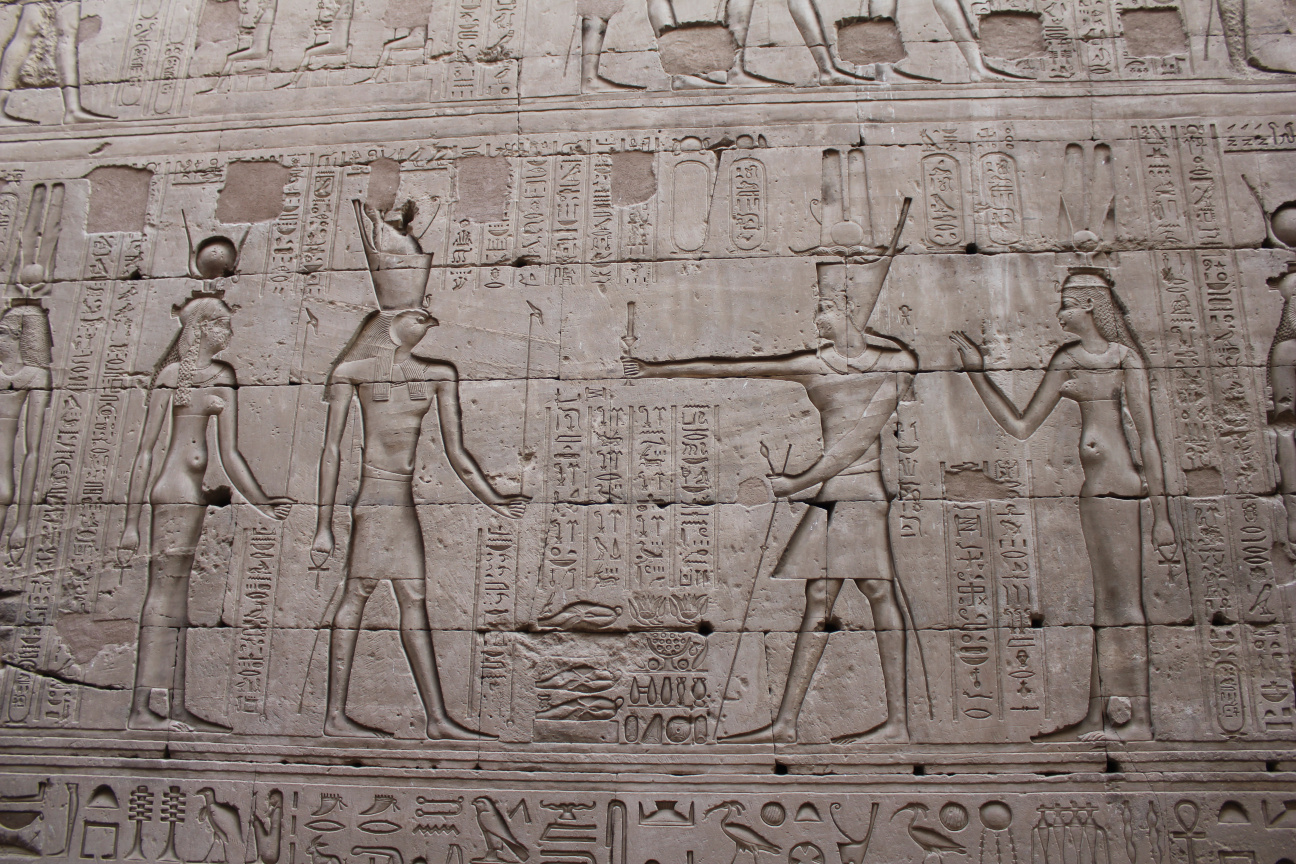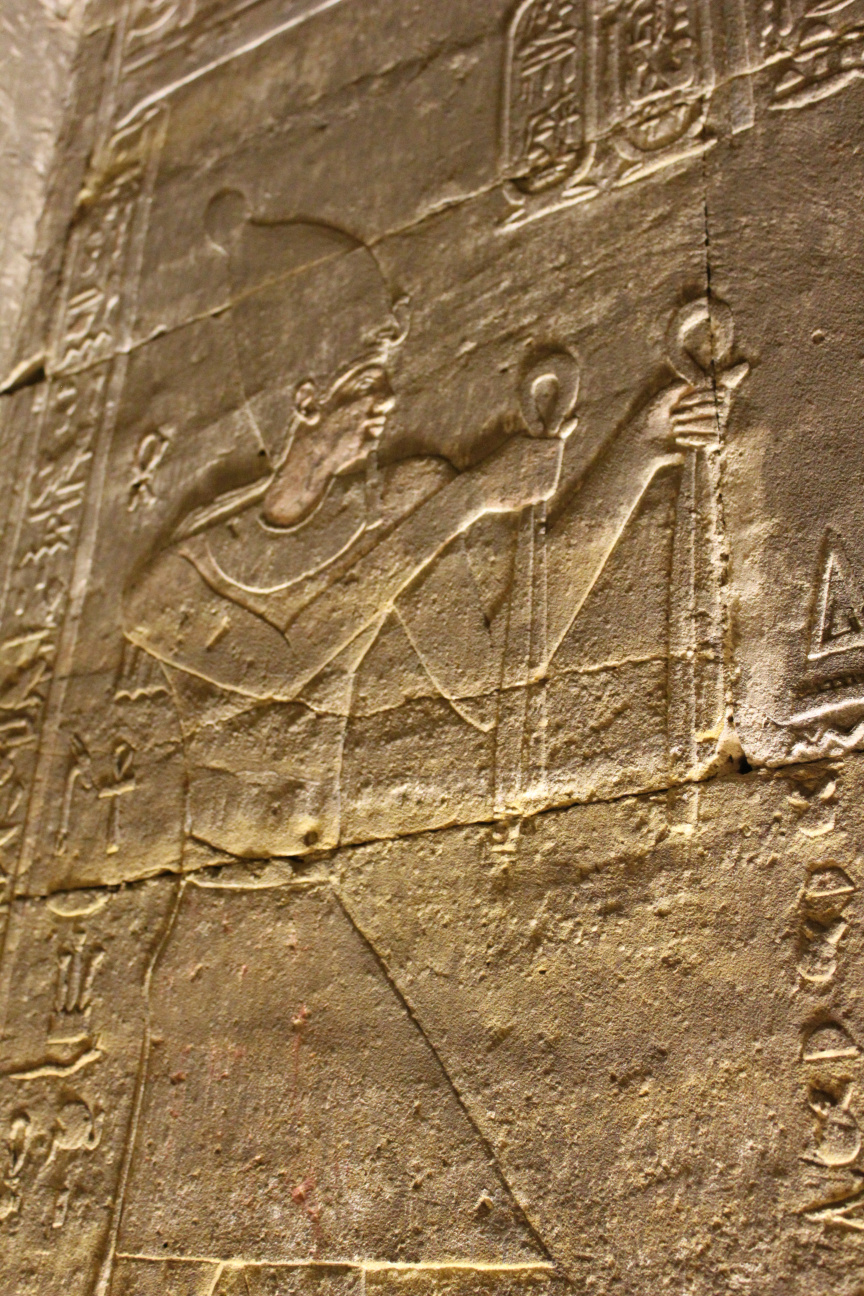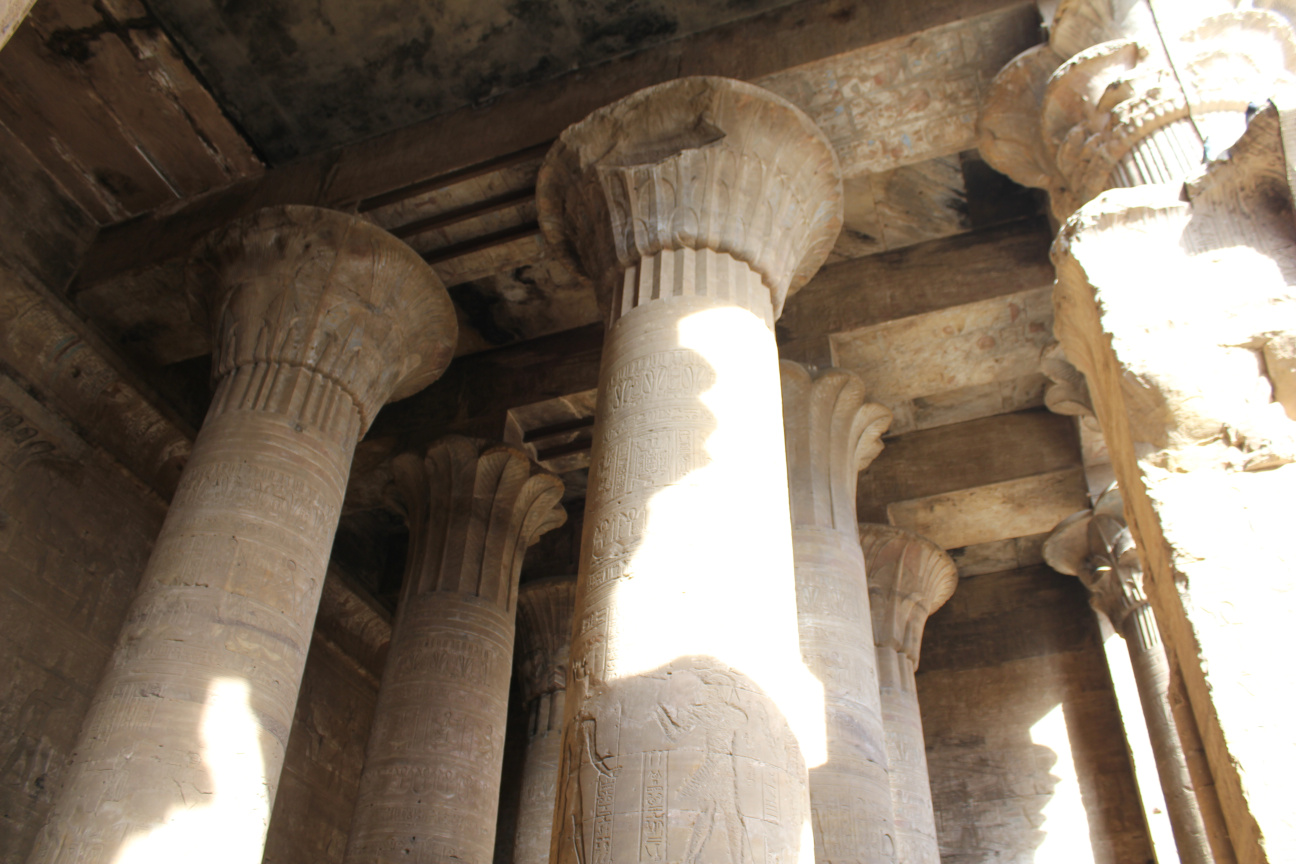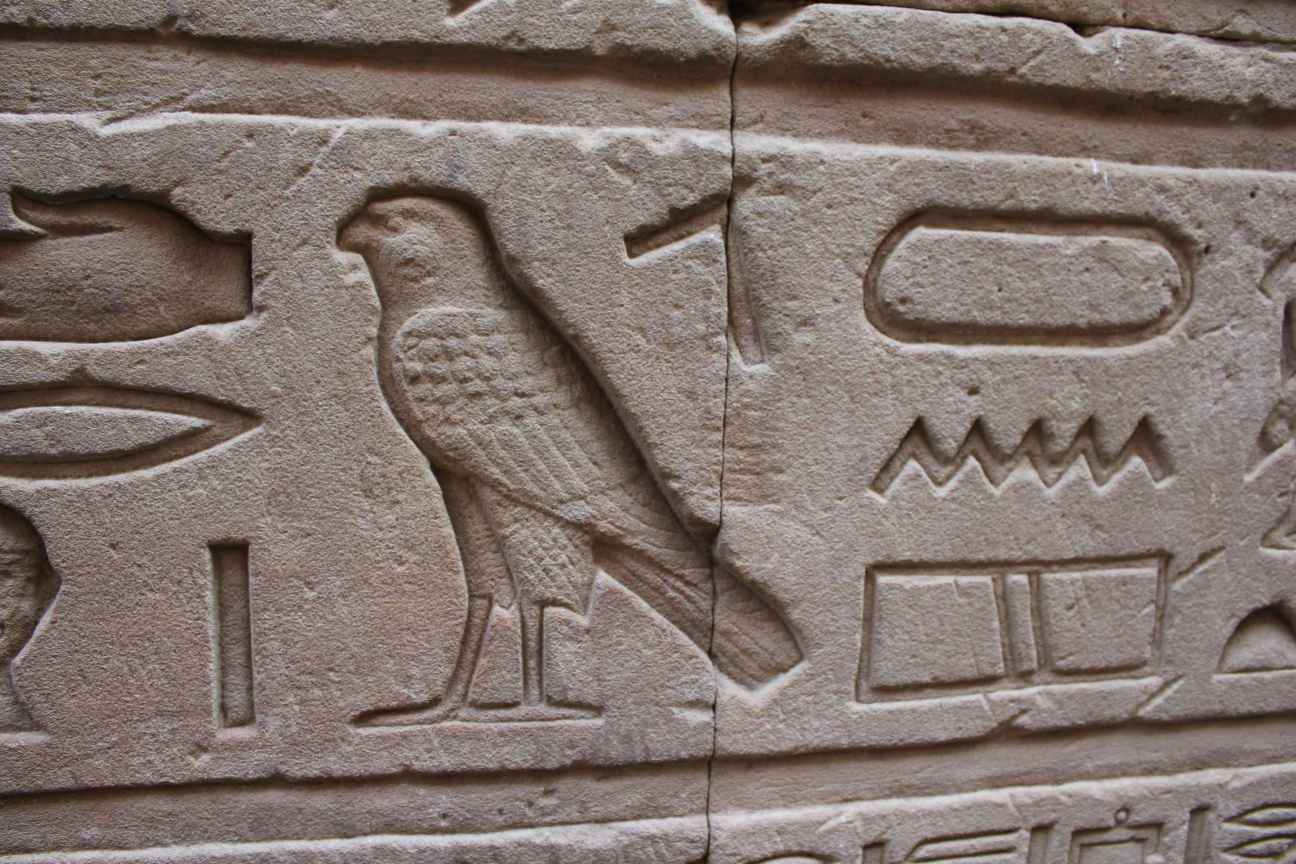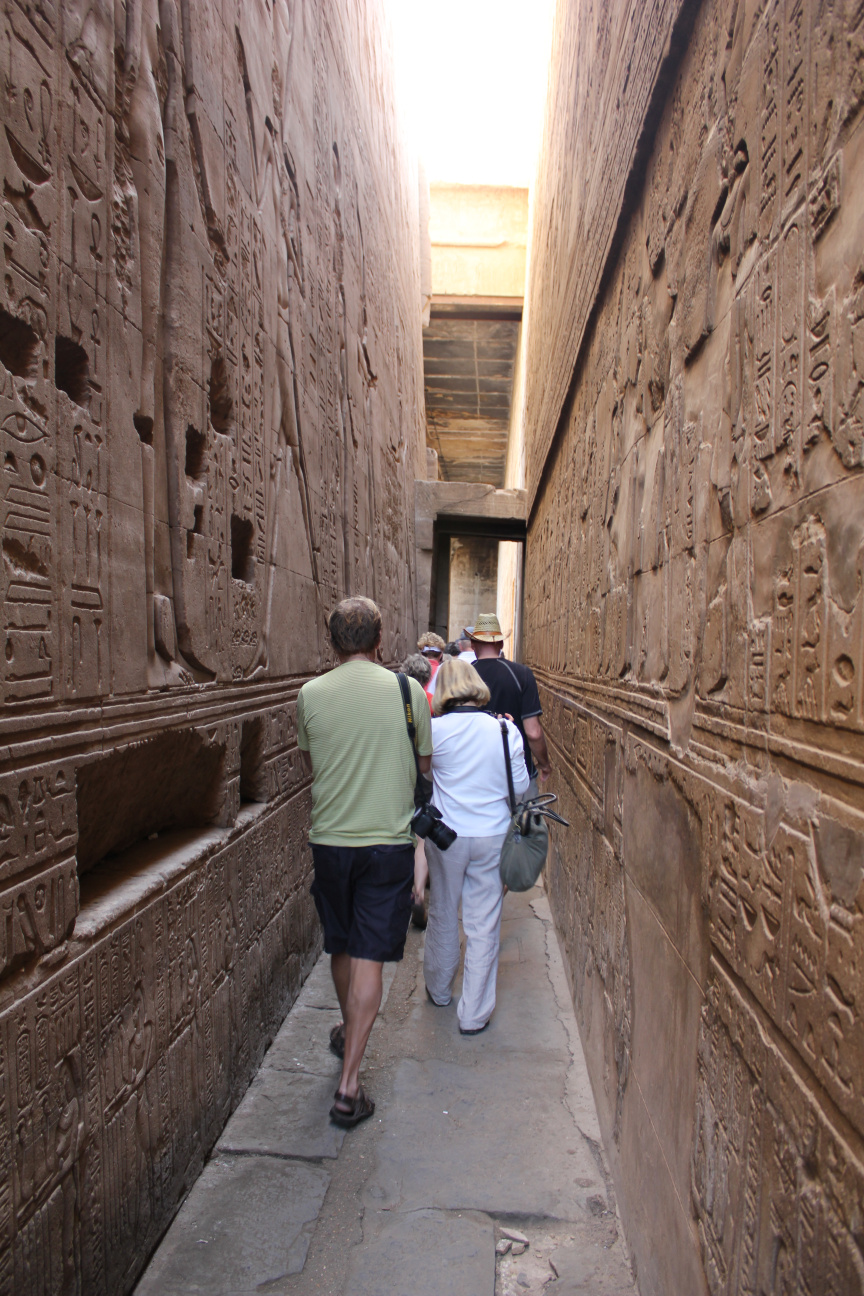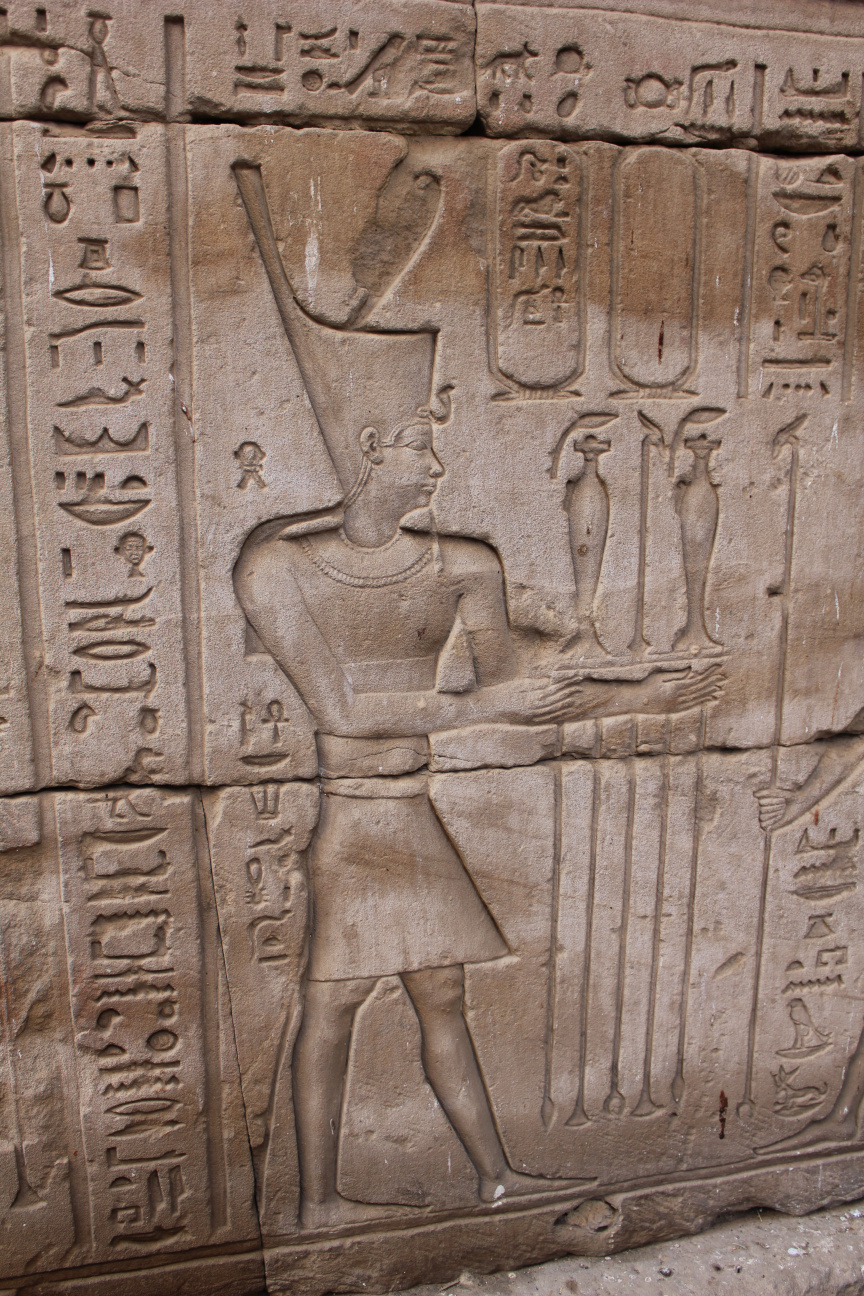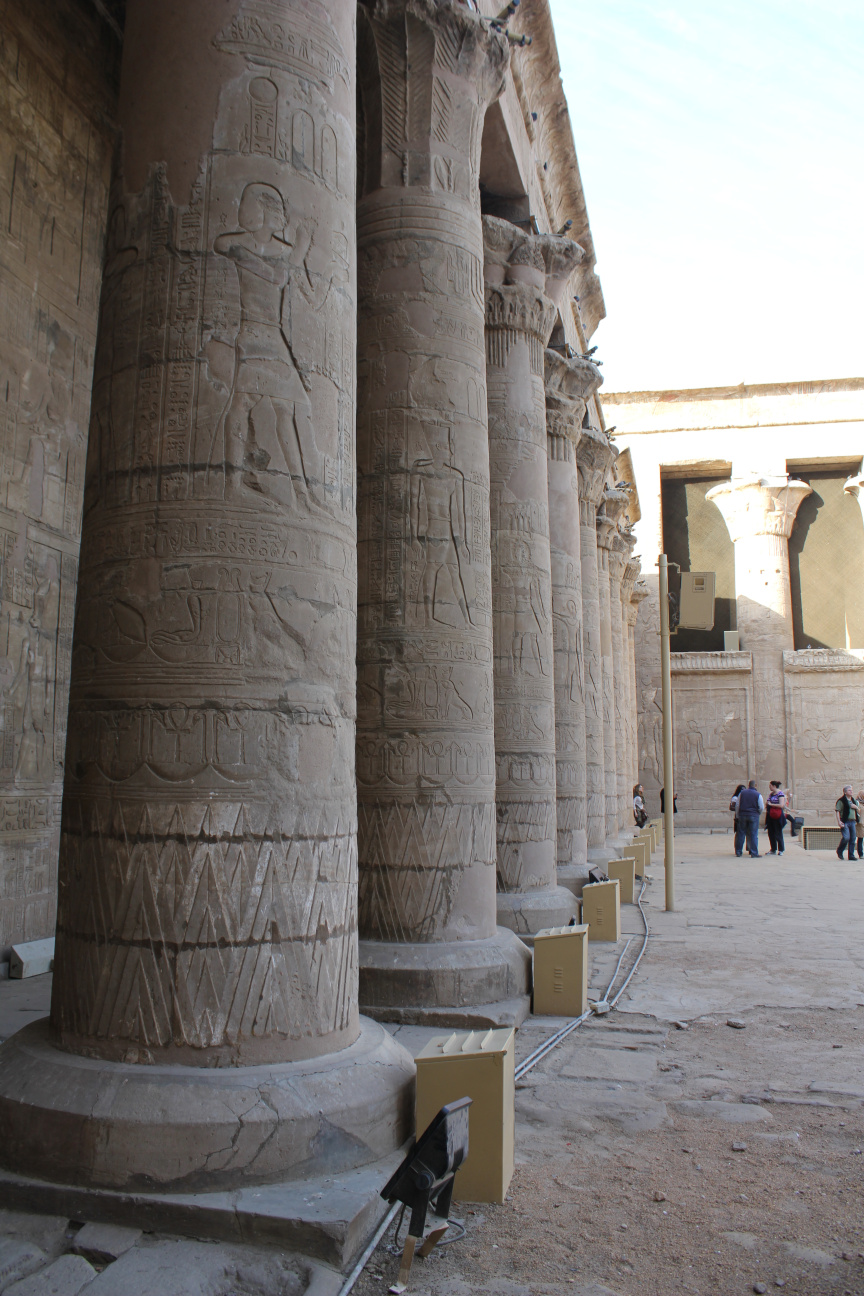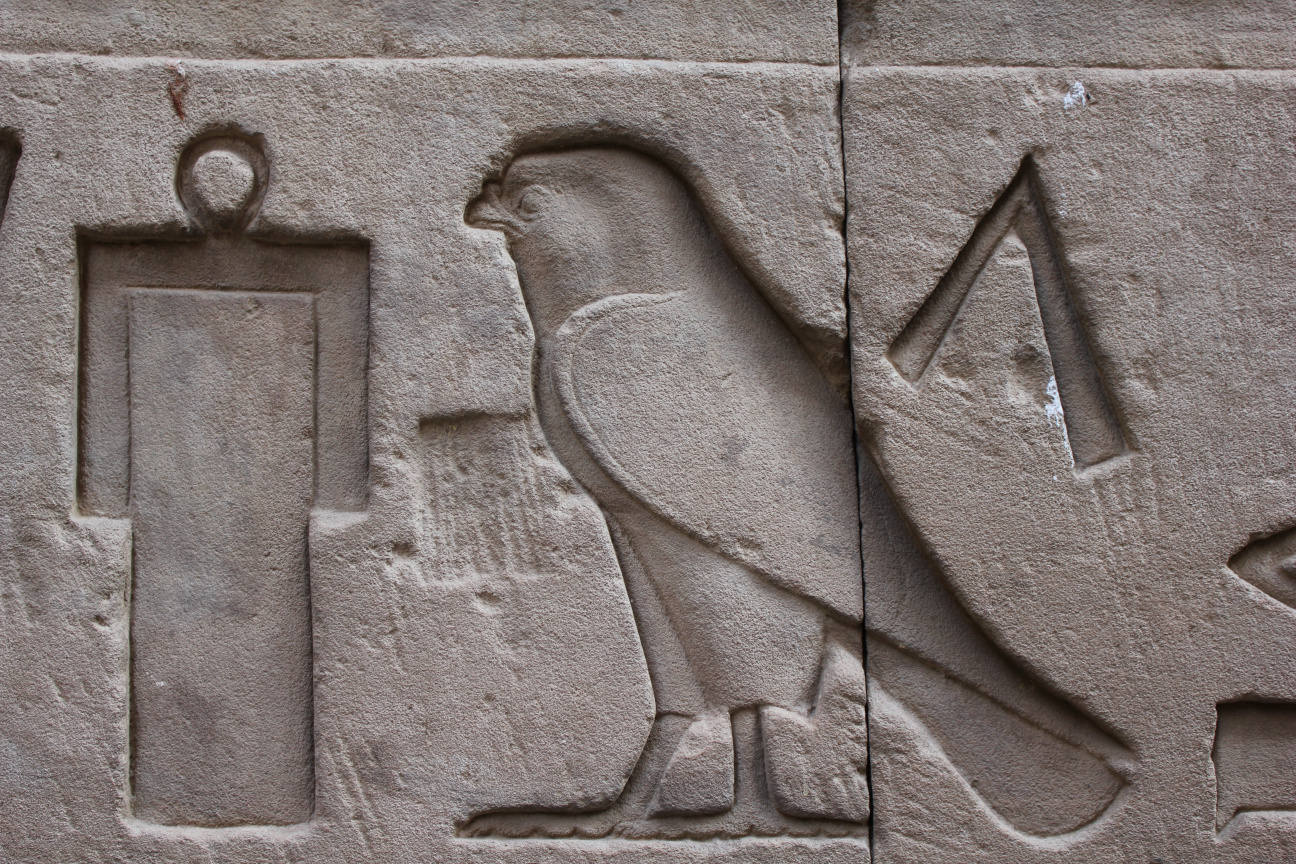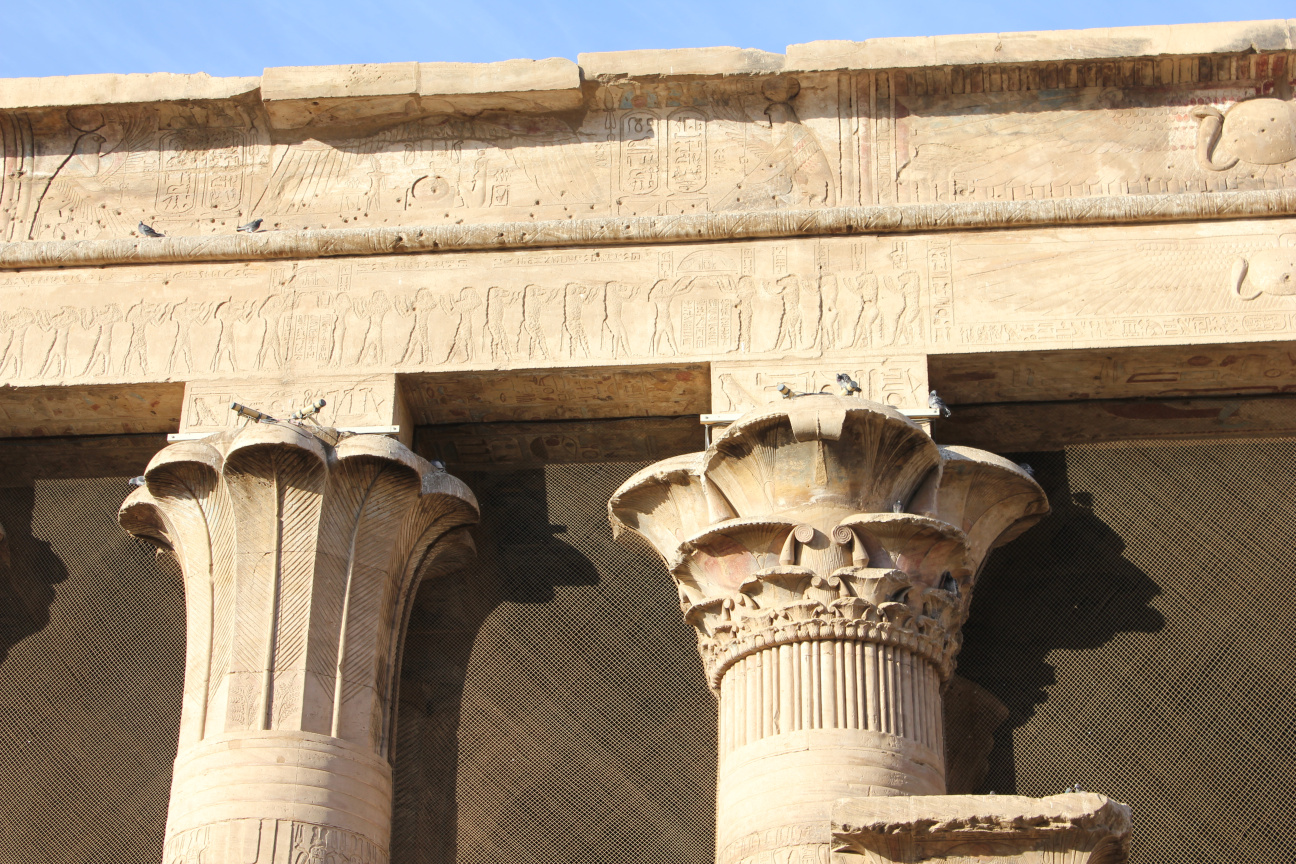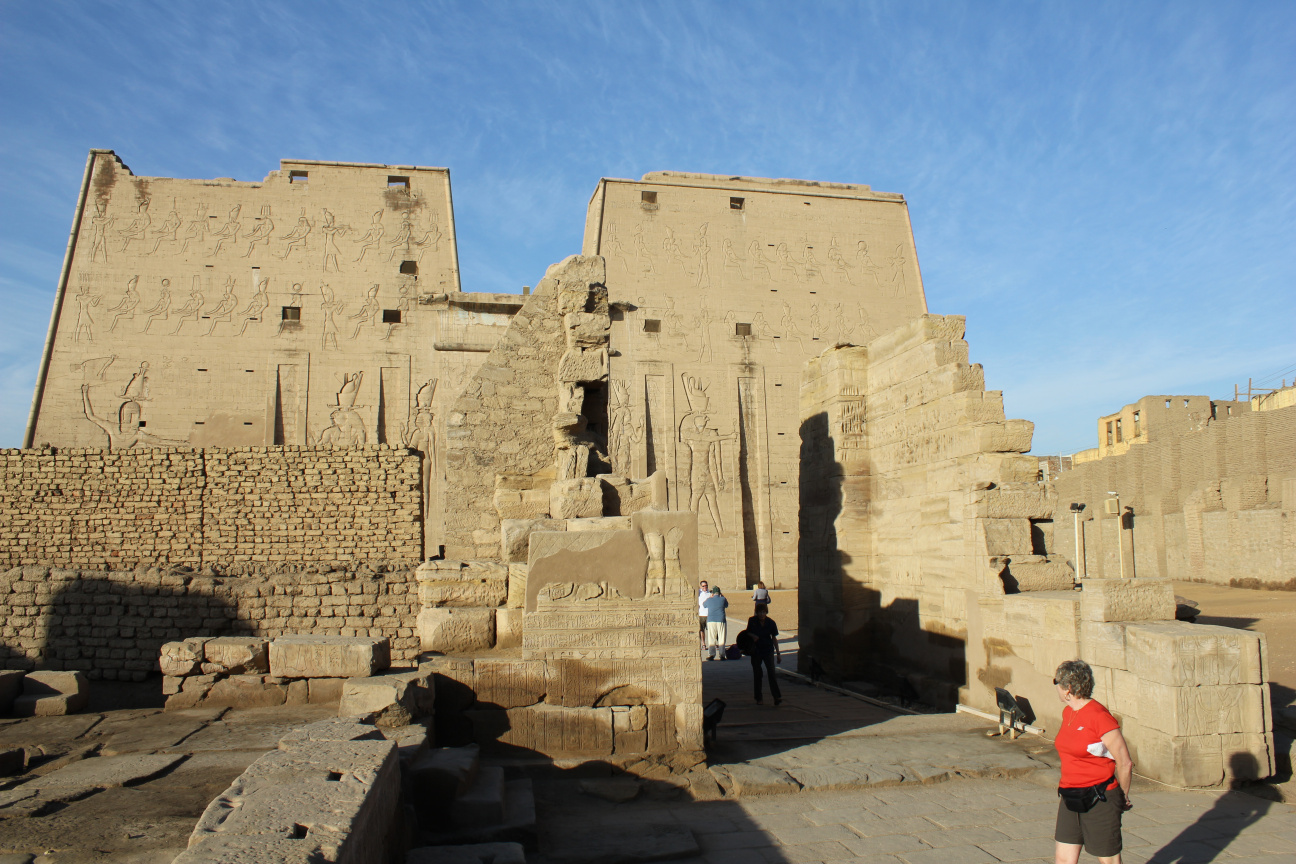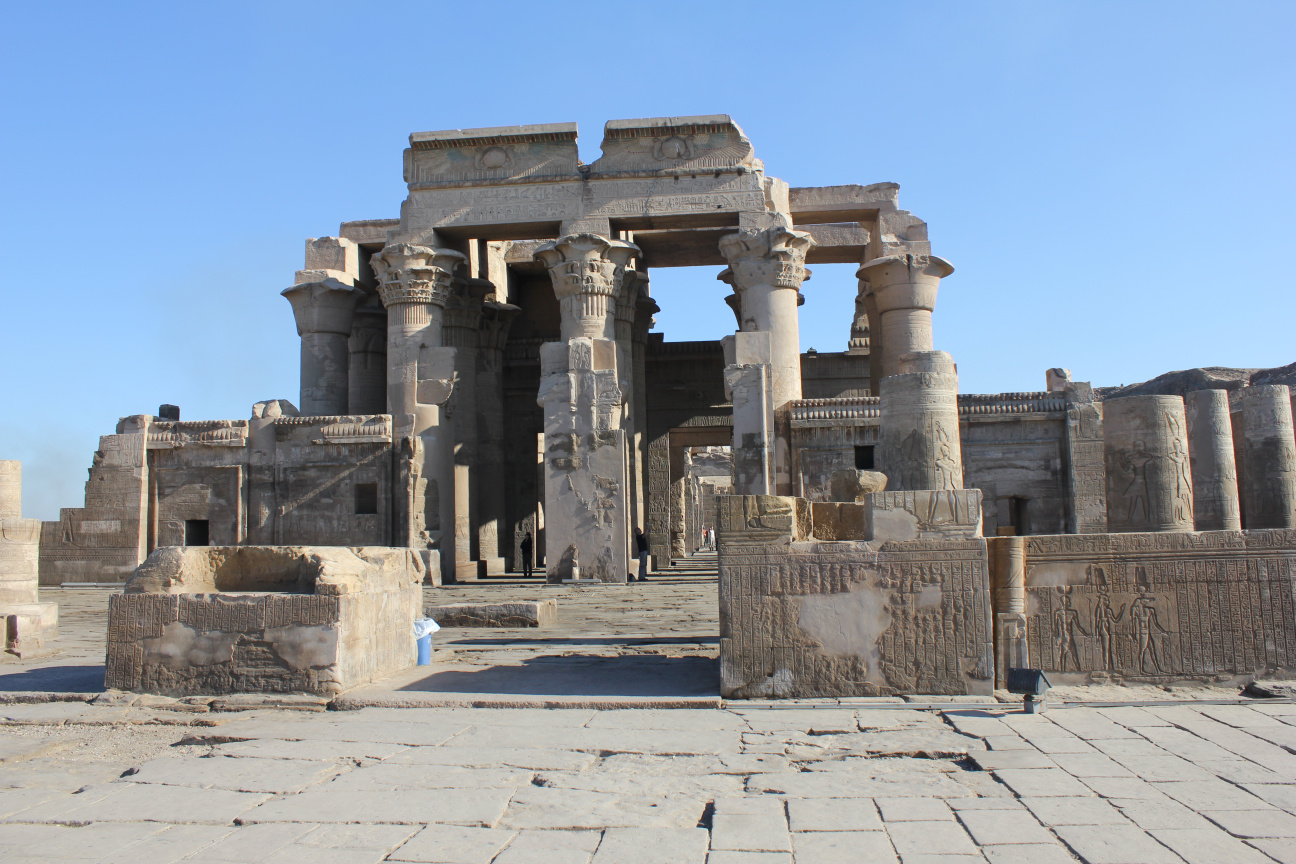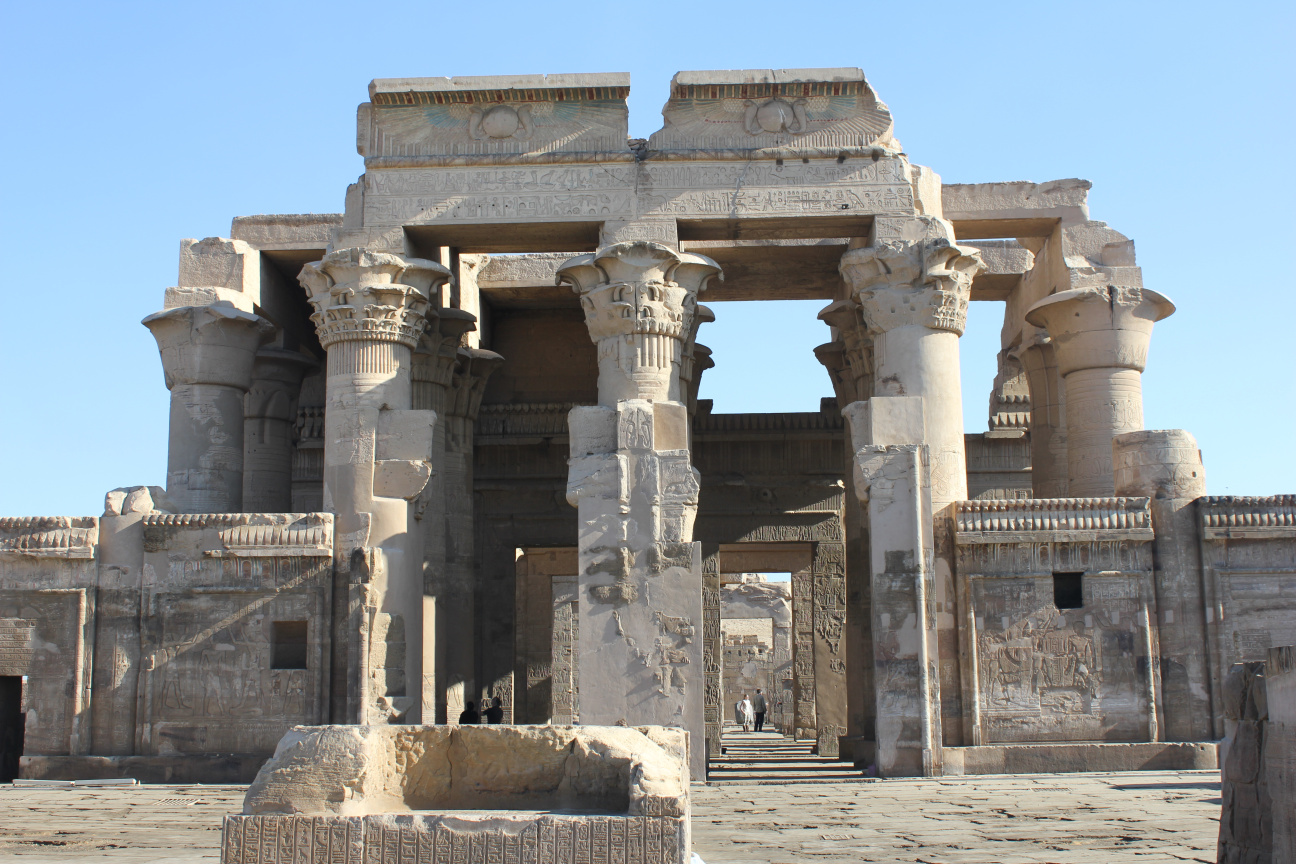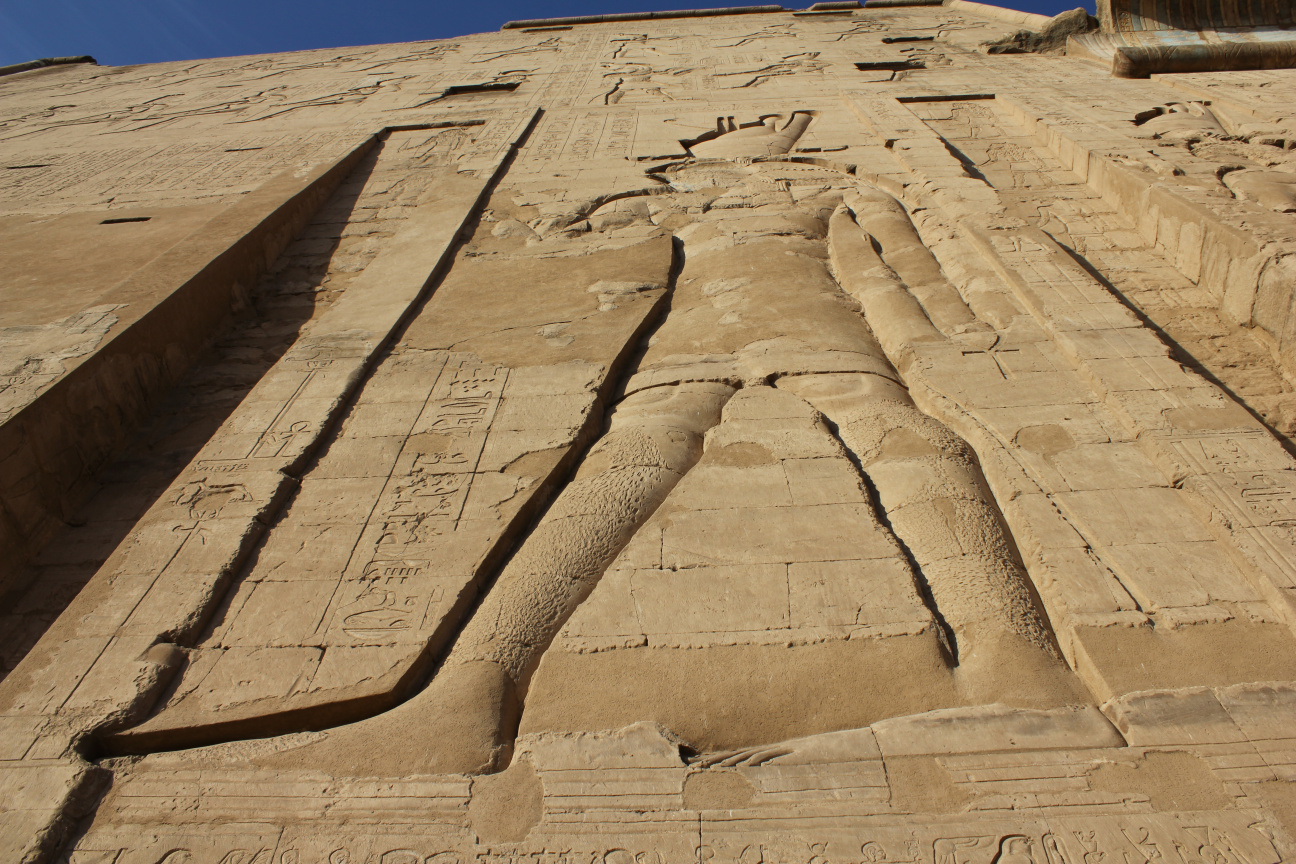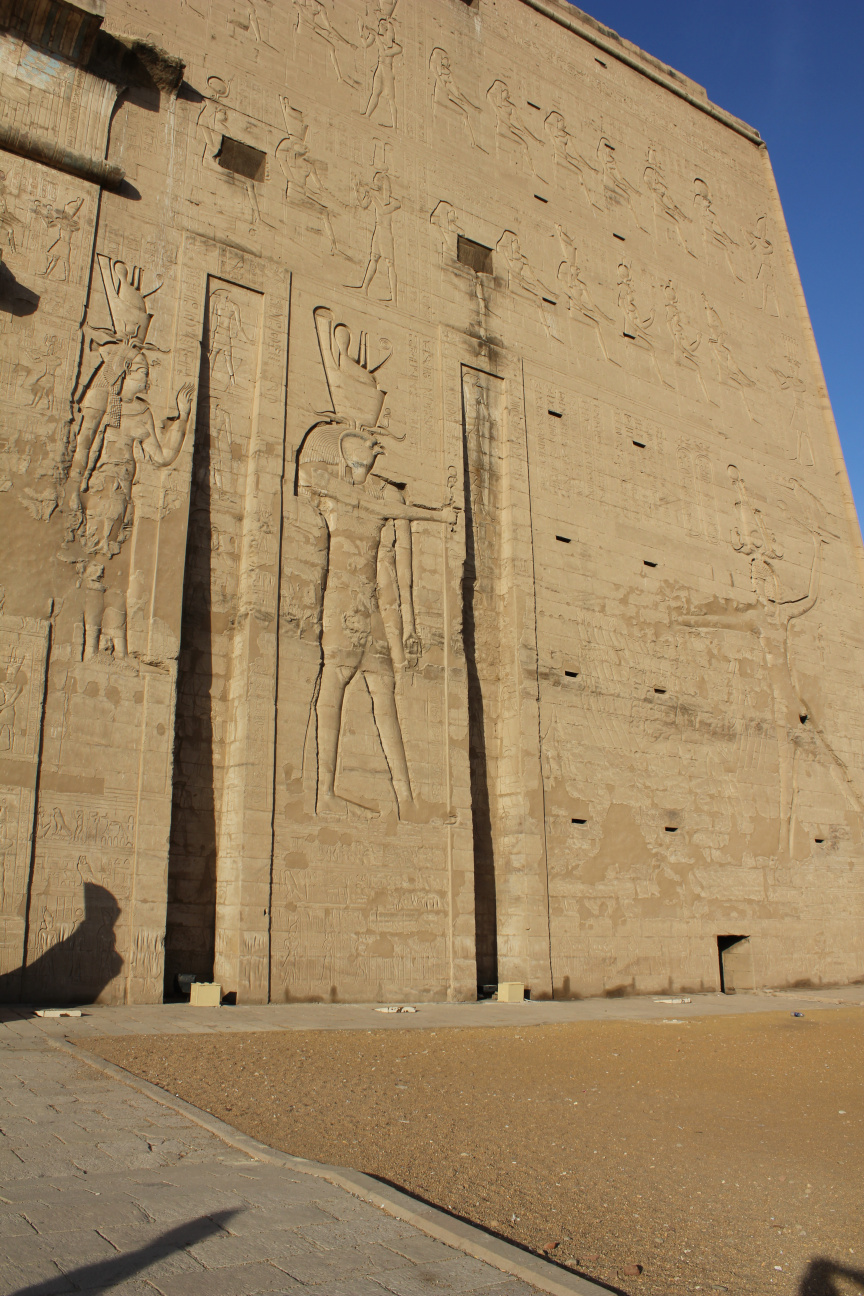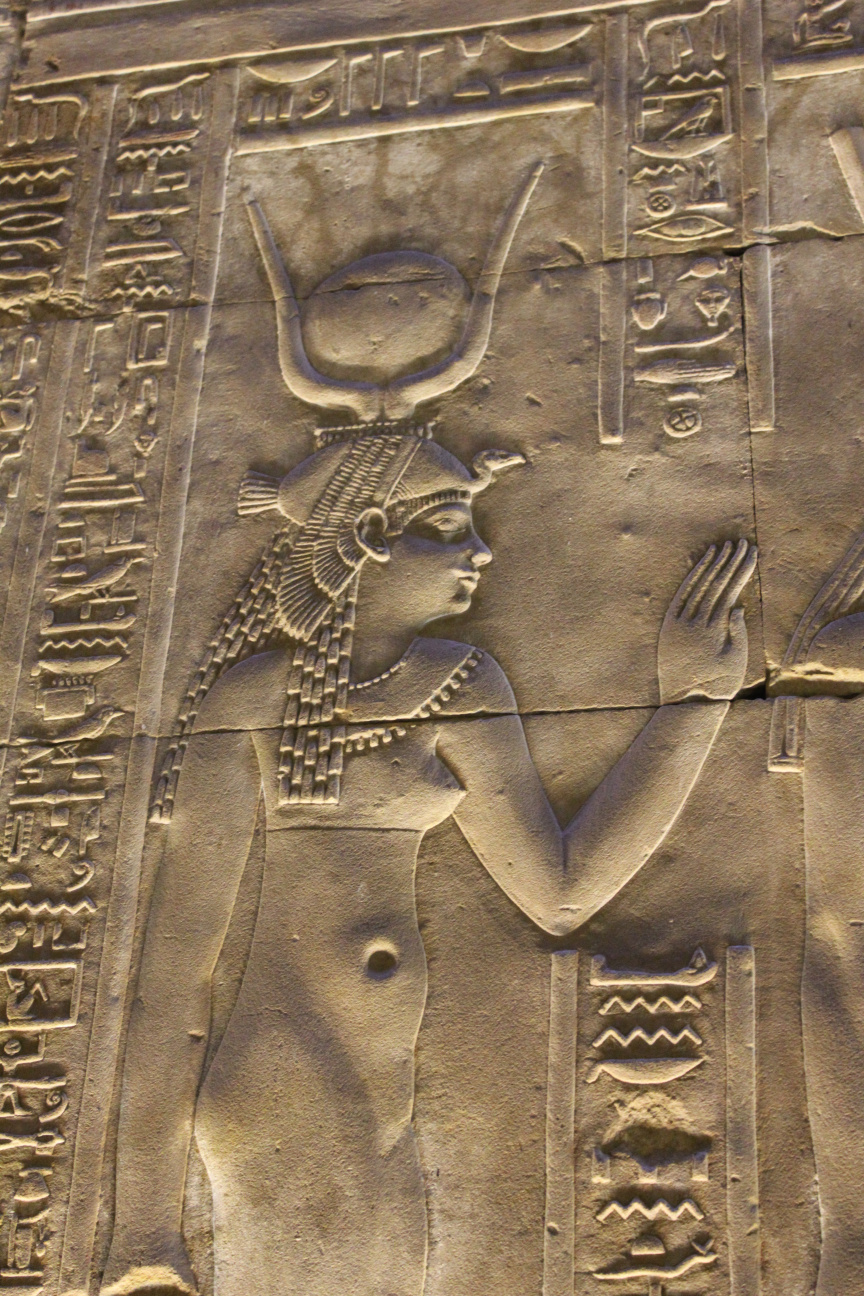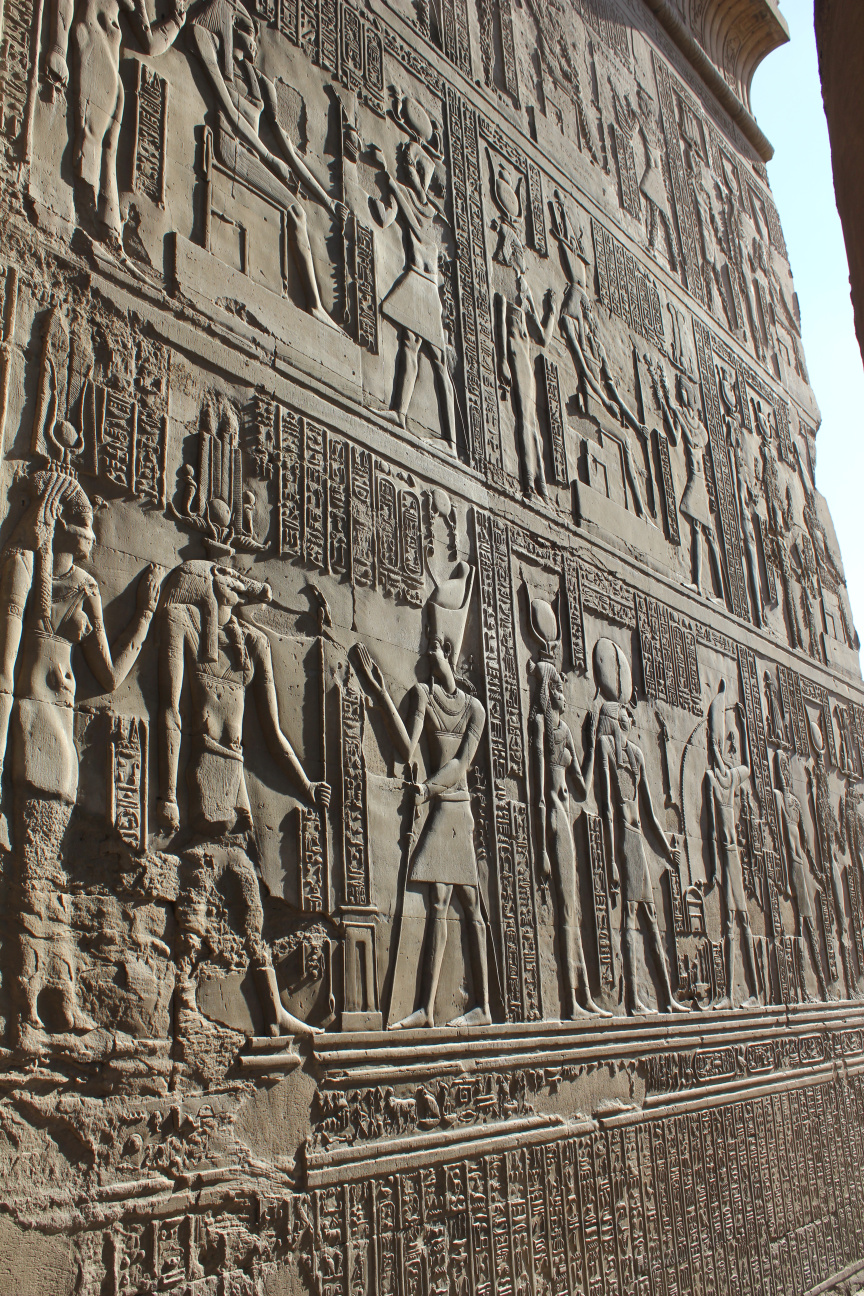It looks like you're using an Ad Blocker.
Please white-list or disable AboveTopSecret.com in your ad-blocking tool.
Thank you.
Some features of ATS will be disabled while you continue to use an ad-blocker.
share:
reply to post by Tsurugi
Ramses!!! Usermaatre Setepenre!!!!
Okay... I tend to get excited when I realize I can start reading SOME of the hieroglyphs. Ramses' name, of course, along with the abbreviated "life, health, prosperity" formula, among others (so tell him "thanks!" from someone who's studying Egyptology and who may never get a chance to go there.)
Photos of this kind will become cultural treasures simply because of the damage done since that time. He's done something valuable, here.
Ramses!!! Usermaatre Setepenre!!!!
Okay... I tend to get excited when I realize I can start reading SOME of the hieroglyphs. Ramses' name, of course, along with the abbreviated "life, health, prosperity" formula, among others (so tell him "thanks!" from someone who's studying Egyptology and who may never get a chance to go there.)
Photos of this kind will become cultural treasures simply because of the damage done since that time. He's done something valuable, here.
Wonderful pictures, and wonderful a gesture of Sharing them with us.
Star and thousands of flags to you sir.
Star and thousands of flags to you sir.
Thanks for posting. What an incredible culture!
Modern architecture doesn't impress me as much as the great Egyptian buildings of Pharaonic times.
This is my favorite picture because it illustrates the colossal scale and corresponding determination of the people who built there.
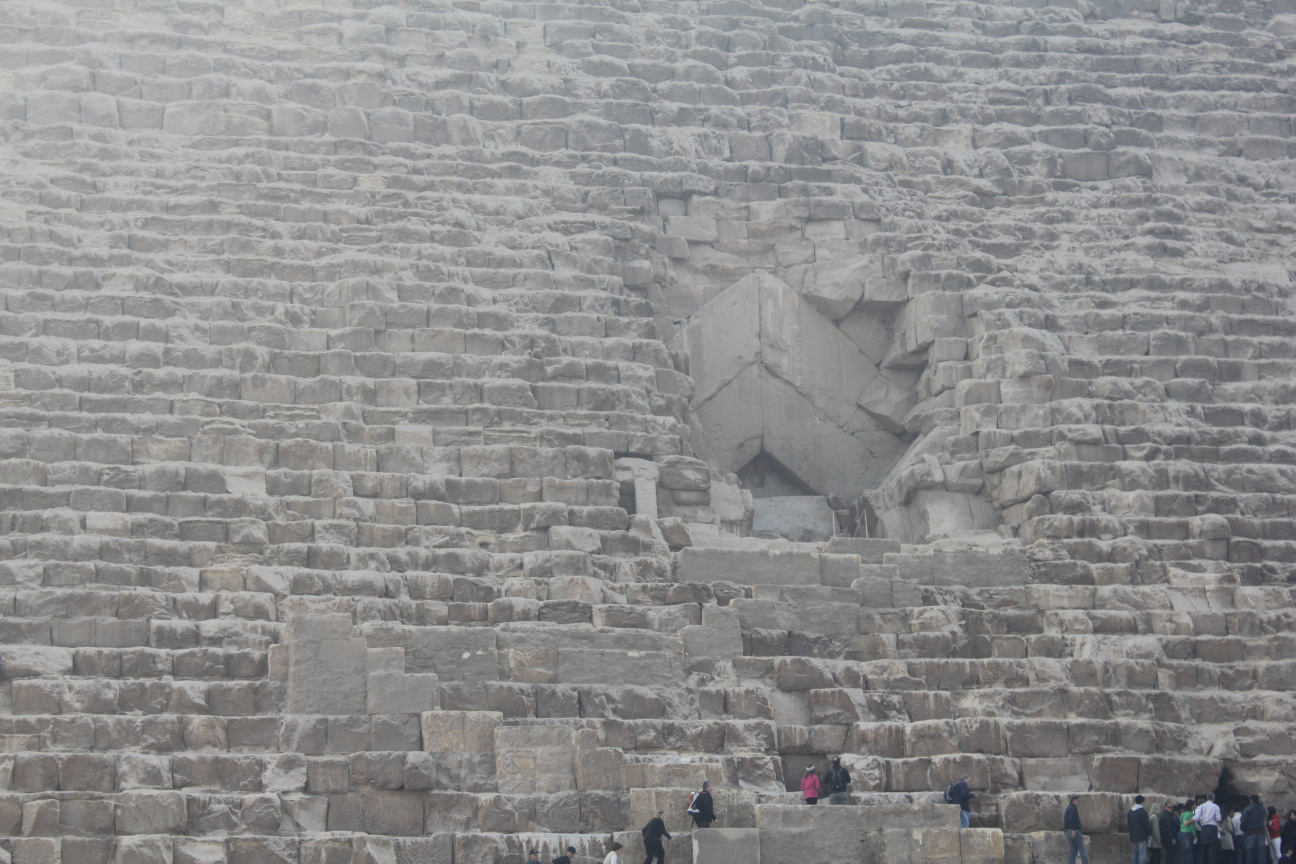
Modern architecture doesn't impress me as much as the great Egyptian buildings of Pharaonic times.
This is my favorite picture because it illustrates the colossal scale and corresponding determination of the people who built there.

edit on 16-10-2013 by ipsedixit because: (no reason given)
Byrd
reply to post by Tsurugi
Ramses!!! Usermaatre Setepenre!!!!
Okay... I tend to get excited when I realize I can start reading SOME of the hieroglyphs.
Hey, I'd get excited about that too, haha...it bugs me sometimes looking at the relief carvings with all the hieroglyphics, because I know it's writing, but the part of my brain that responds is the artist part, not the scribe. Because the glyphs are pictures, my mind insists it can translate them, can infer the intent like how one does with a painting. But I know that cant be right, heh.
What is a good resource for attempting to learn some rudiments of hieroglyphic scriot? Is there one?
reply to post by Tsurugi
The Egyptians knew that with age the outer coating of the Pyramids would disintegrate but since they were so advanced I believe they left a code that I can see that is exposed and has been left beneath the original coating on certain sides of the Pyramids. Contrary to all the various theories of how the Pyramids were built I believe the Pyramid's huge blocks were poured using an advanced technology and on each block containing a written visual code when put together and aligned with the other blocks told the story of who the Egyptians are and from where they came.
With 2.3 million limestone blocks with out bubbles I believe these limestone blocks were duplicated and replicated right on sight with a congruent code embedded by design on the surface of each outer face of each limestone block. Impossible you say with advanced technology anything is possible and like a computer code as the blocks were being poured and aligned a blueprint similar to a laser copier was imprinted on the outside of each block.^Y^
The Egyptians knew that with age the outer coating of the Pyramids would disintegrate but since they were so advanced I believe they left a code that I can see that is exposed and has been left beneath the original coating on certain sides of the Pyramids. Contrary to all the various theories of how the Pyramids were built I believe the Pyramid's huge blocks were poured using an advanced technology and on each block containing a written visual code when put together and aligned with the other blocks told the story of who the Egyptians are and from where they came.
With 2.3 million limestone blocks with out bubbles I believe these limestone blocks were duplicated and replicated right on sight with a congruent code embedded by design on the surface of each outer face of each limestone block. Impossible you say with advanced technology anything is possible and like a computer code as the blocks were being poured and aligned a blueprint similar to a laser copier was imprinted on the outside of each block.^Y^
edit on 16-10-2013 by amari because: (no reason given)
amari
reply to post by Tsurugi
Impossible you say with advanced technology anything is possible and like a computer code as the blocks were being poured and aligned a blueprint similar to a laser copier was imprinted on the outside of each block.
Hey, whoa, I didn't say it was impossible. That is a word I try very hard not to use.
I do think this idea of yours is rather...specific.
For instance, let's say there is a code....how do you know what information it contains? Why do you assume the blocks were poured? Couldnt such an ebedded code have just as easily been imprinted into regular limestone quarried blocks? Why did the builders feel the need to encode everything about themselves into the stones of a building? Couldnt it just as easily be the software for weather modification using stone monuments, or the core programming for an advanced A.I.? Why do you say the Egyptians built it? Couldn't it have been someone else? You say they knew the outer casing stones would deteriorate. Is that what happened? I thought they were "mined" for use in nearby Cairo....?
oldmeatwad
Sorry guys -I could not resist ! imgur.com...
Not even close (or "clothes"). That's the sign that means "city", and is part of a sentence reading "ruler of the city of Inunu (Heliopolis.) Starting on the left, it reads "Amun, the great and perfect god of Egypt receives an offering (the Pharaoh's name is not in this image) from the ruler of Heliopolis..."
Not show in the picture are the other hieroglyphs that give the Pharaoh's name and says he's also Lord of Egypt (part of that is in the inscription but not the whole thing) and that he is presenting this to Amun so that the Great God Amun will be pleased with the people. There's more than that, but that's just the bit around the "button that isn't really a button."
(no, I'm not making this up. Anyone can learn to read them.)
Tsurugi
Okay... I tend to get excited when I realize I can start reading SOME of the hieroglyphs.
Hey, I'd get excited about that too, haha...it bugs me sometimes looking at the relief carvings with all the hieroglyphics, because I know it's writing, but the part of my brain that responds is the artist part, not the scribe. Because the glyphs are pictures, my mind insists it can translate them, can infer the intent like how one does with a painting. But I know that cant be right, heh.
What is a good resource for attempting to learn some rudiments of hieroglyphic scriot? Is there one?
Anyone can, with a little bit of practice, read hieroglyphs well enough to get the sense of what's on many objects in museums (and can figure out how to look up the rest.) The Egyptian language changed, but the standard is to start on Middle Kingdom Egyptian (kind of in the middle of their history)
So -- want to leap right in? Here's some starter resources:
ancientegyptonline.co.uk... -- this one... well, you can dive right in and start translating some of the names and figuring out which photos show an offering scene with this one.
A nice list of all the good books and the excellent websites is here: seshatsjournal.wordpress.com...
At the Hall of Maat (BBS) there's often links to free books posted.
One of the "weirdnesses" you will encounter are "transliterations" of the text. There are almost a thousand signs, and when scholars get arguing about the meaning of a text, they needed to have a way to be able to make sure they were talking about the same word (and not "that funny suqiggle THERE... fourth down from that doohickey and to the right of the tall guy with the feathers") The standard "transliteration" is something called the Manuel de Codage which you can read about here: en.wikipedia.org...
Serious students start with the Collier and Manley HOW TO READ EGYPTIAN HIEROGLYPHS (a standard classroom text and the one used by hieroglyph study groups. There are others, but this one is probably THE very best... in addition you can join the hieroglyph study groups on Yahoo and learn them by practicing them (this is what I'm doing).
Most of us do this work with dictionaries and reference sign lists in hand. It's a different language, but not an impossible one.
And the total glee you will feel the first time you look at a picture and say "no! Wait!!! I know what that is!!! (even if you have to look it up)" is just amazing!
edit on 16-10-2013 by Byrd because: (no reason given)
I thought the Moselm Brotherhood would have already got around to destroying all this paganistic blasphemy...
Byrd
Most of us do this work with dictionaries and reference sign lists in hand. It's a different language, but not an impossible one.
Ah. I'm somewhat familiar with that type of work, as I've done some poking around in the Torah and various apocryphal and epigraphical texts, in their original forms.
Thanks for the excellent links! I doubt I'll ever reach the point where I can read hieroglyphs like a priest of Thoth, but perhaps I can at least get to the "See Spot run" stage, heh.
The stuff about transliteration and the Manuel de Codage is very interesting. I can see why such a system would be very useful and save a lot of headaches and wasted time("Ohhh I thought you meant the squiggle over THERE...third column over from the dog with the Pope hat, in between the pointy thingie and the bird with the serious game-face").
And the total glee you will feel the first time you look at a picture and say "no! Wait!!! I know what that is!!! (even if you have to look it up)" is just amazing!
I can imagine. That would feel like an accomplishment for sure, especially since I always have this nagging feeling that it is silly to attempt to study and understand a culture when I am basically illiterate when it comes to their language and writing.
Thanks again!
ipsedixit
This is my favorite picture because it illustrates the colossal scale and corresponding determination of the people who built there.
Then, my good man, this link is for you:
Full-Resolution version of ipsedixit's fav pic
Undoubtedly, the finest pictures of Egyptian structures I have ever seen.
Thanks so much for sharing this, they are of superb quality and you should be proud of your uncle for being able to capture such detail.
Thanks so much for sharing this, they are of superb quality and you should be proud of your uncle for being able to capture such detail.
edit
on 17-10-2013 by charlyv because: (no reason given)
reply to post by amari
I would suggest you take a close look at the irregular shapes of the core stones.
I would suggest you take a close look at the irregular shapes of the core stones.
Out of that last group, look at these again:
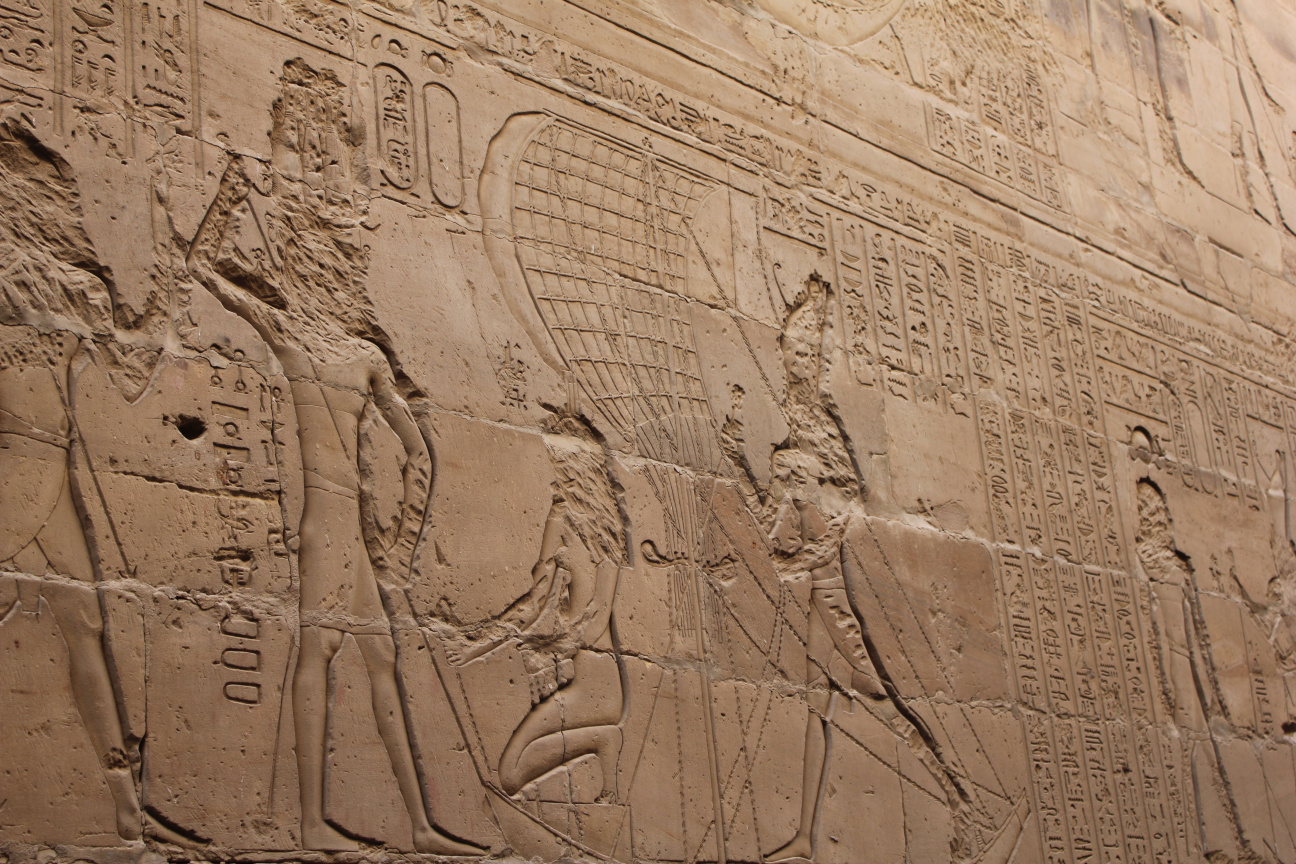

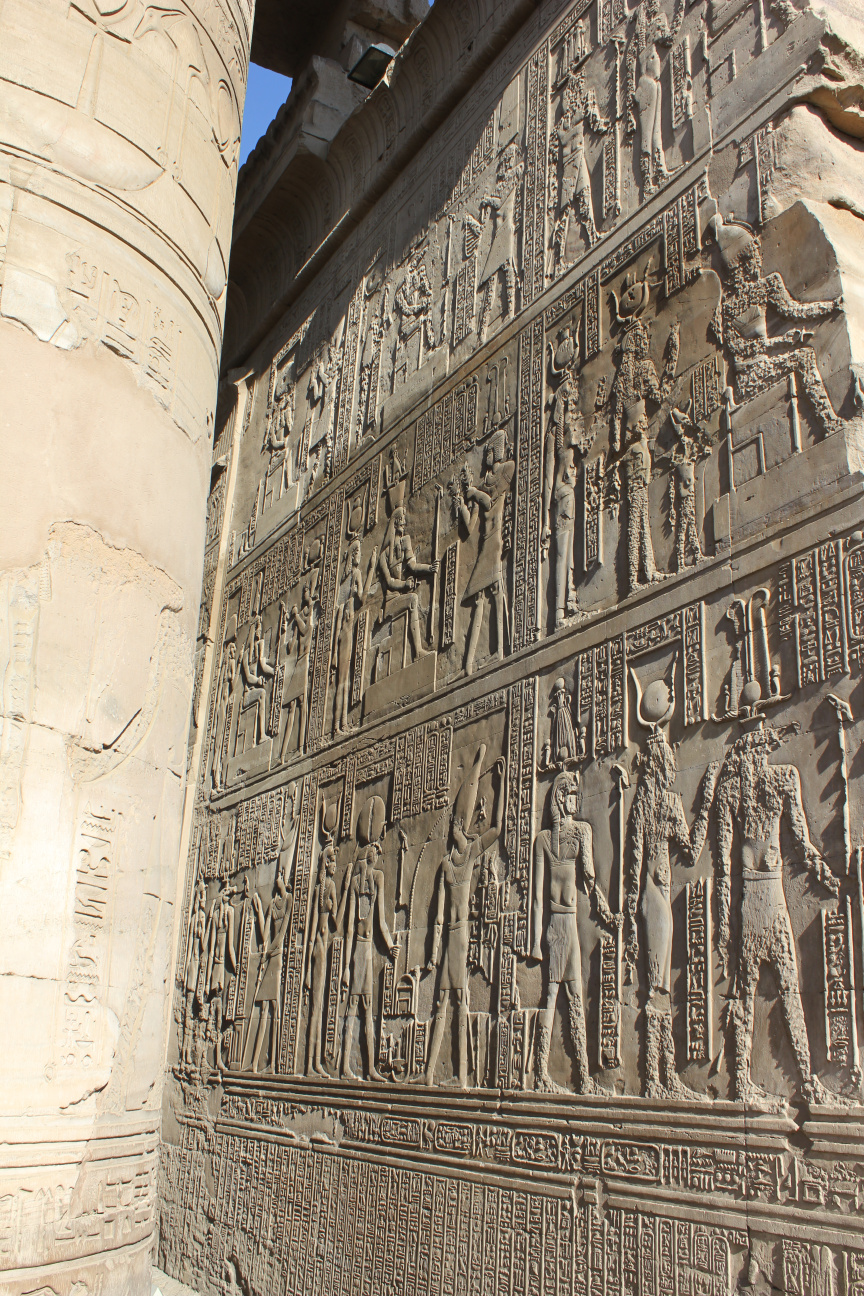
Doesn't the damage look a little too selective? I think these are examples of deliberate vandalism...the question being, is it recent?....or ancient?
If the damage is old, who might have done it, and why? Who did the damaged figures represent?
What do you guys think? Byrd? Hans?



Doesn't the damage look a little too selective? I think these are examples of deliberate vandalism...the question being, is it recent?....or ancient?
If the damage is old, who might have done it, and why? Who did the damaged figures represent?
What do you guys think? Byrd? Hans?
Tsurugi
reply to post by SuperFrog
Eventually there will be an online album of full resolution pics, but it will be a while. I live in the boondocks so my uplink is painfully, teeth-grindingly slow, and it frequently just drops the connection altogether, so uploading full res pics will be a matter of babysitting each and every picture upload. Feh.
Thank you for even considering it. Great pictures and great thread.
Sometimes I wonder if we will be able to see some of those historical sites ever again...
What a wonderful treasure you have there and thanks for sharing. I am overwhelmed from all the content i one single thread.
*clapping* I hope you receive an applause from every moderator on this site.
*clapping* I hope you receive an applause from every moderator on this site.
new topics
-
Just learned a really helpful trick for internet searches
Computer Help: 5 hours ago -
Not off to a good start
General Chit Chat: 7 hours ago
top topics
-
If they can see...they can read!!
Rant: 14 hours ago, 7 flags -
Not off to a good start
General Chit Chat: 7 hours ago, 5 flags -
Just learned a really helpful trick for internet searches
Computer Help: 5 hours ago, 4 flags
active topics
-
The C.D.C. Says There Was NO INFLUENZA Worth Reporting for the 2020-2021 Flu Season.
Diseases and Pandemics • 92 • : BedevereTheWise -
Maybe they didn't get away with it: The Lincoln-Kennedy assassination parallels. 7 sentences long.
History • 12 • : Solvedit -
Vehicle Strikes people in New Orleans
Mainstream News • 263 • : xuenchen -
The Hand that Rocks the Cradle - Labour Plans “diversities of our society” Curriculum Change
Regional Politics • 17 • : Cvastar -
Not off to a good start
General Chit Chat • 13 • : JadedGhost -
Just learned a really helpful trick for internet searches
Computer Help • 7 • : Cvastar -
Simulation theory and have we reset before like a game?
Conspiracies in Religions • 42 • : crayzeed -
Post A Funny (T&C Friendly) Pic Part IV: The LOL awakens!
General Chit Chat • 7978 • : underpass61 -
DONALD J. TRUMP - TIME's Most Extraordinary Person of the Year 2024.
Mainstream News • 45 • : WeMustCare -
Tesla Cybertruck Explodes in Front of Trump Hotel in Las Vegas
Mainstream News • 82 • : WeMustCare

